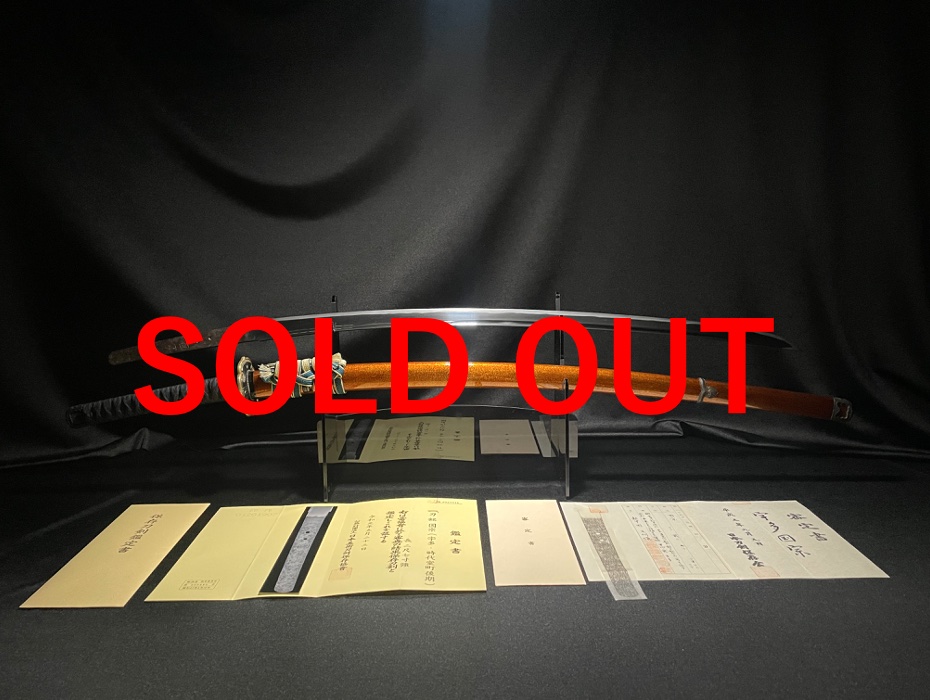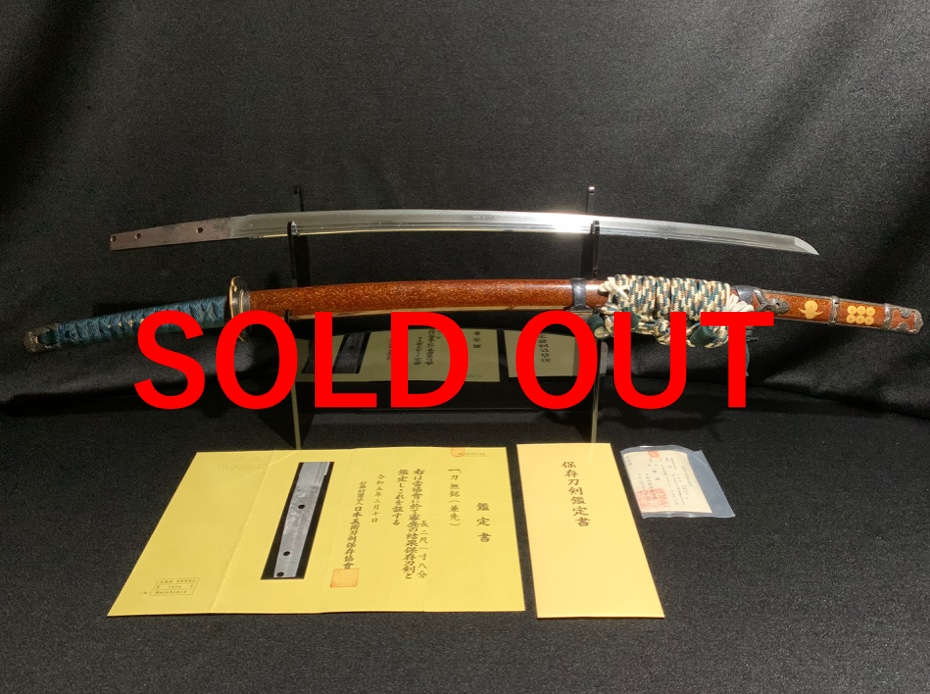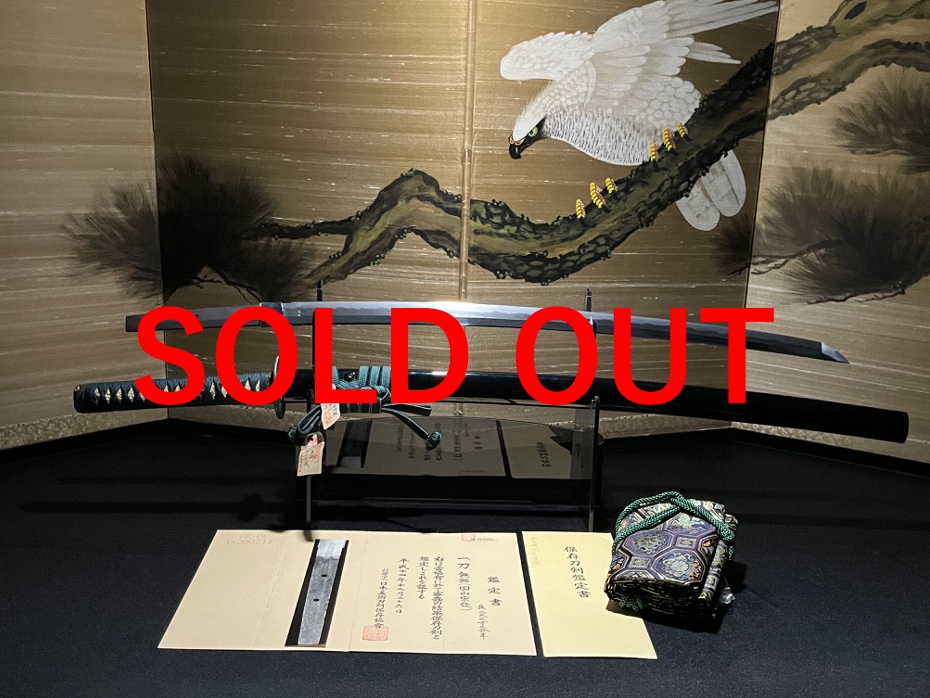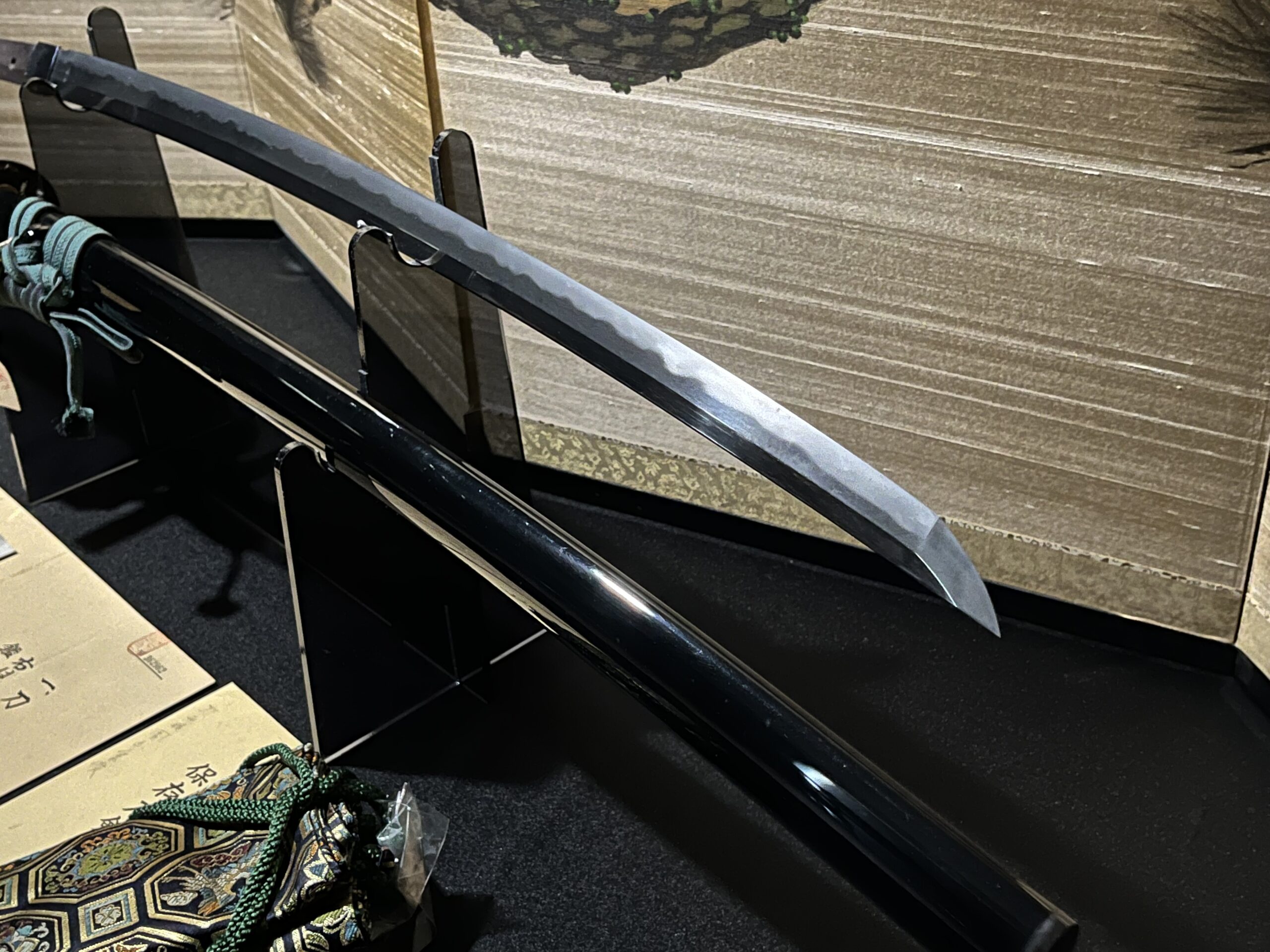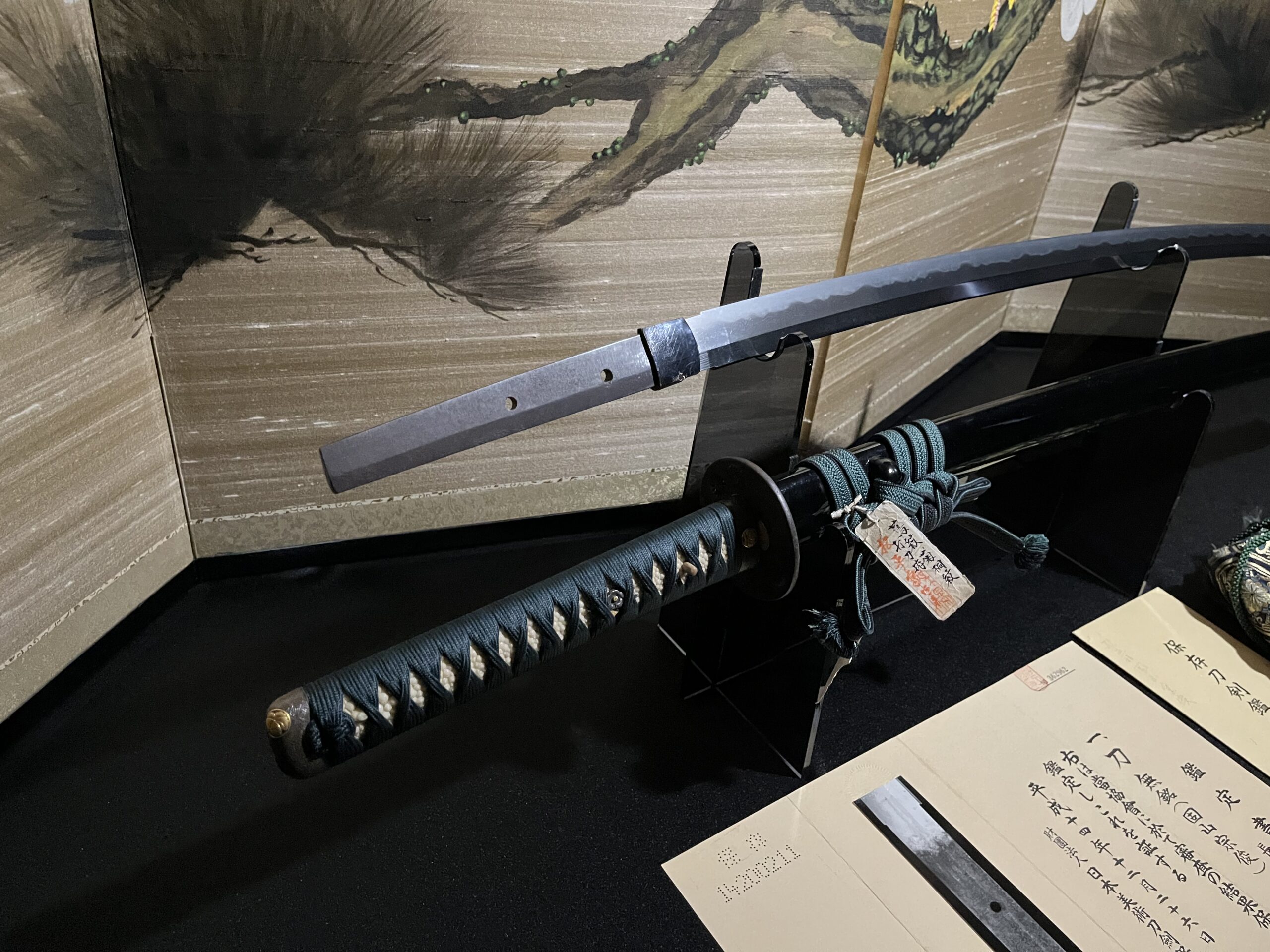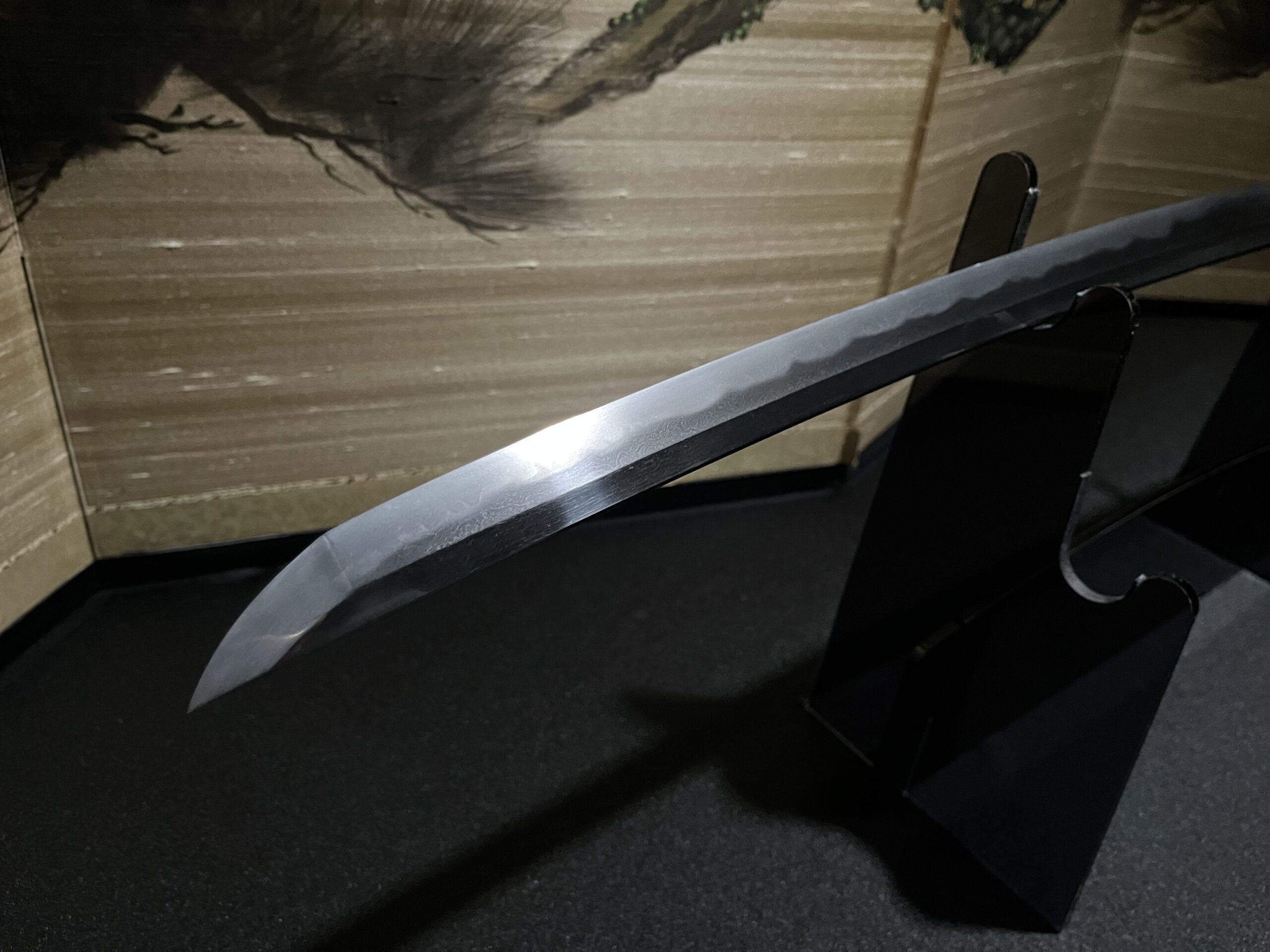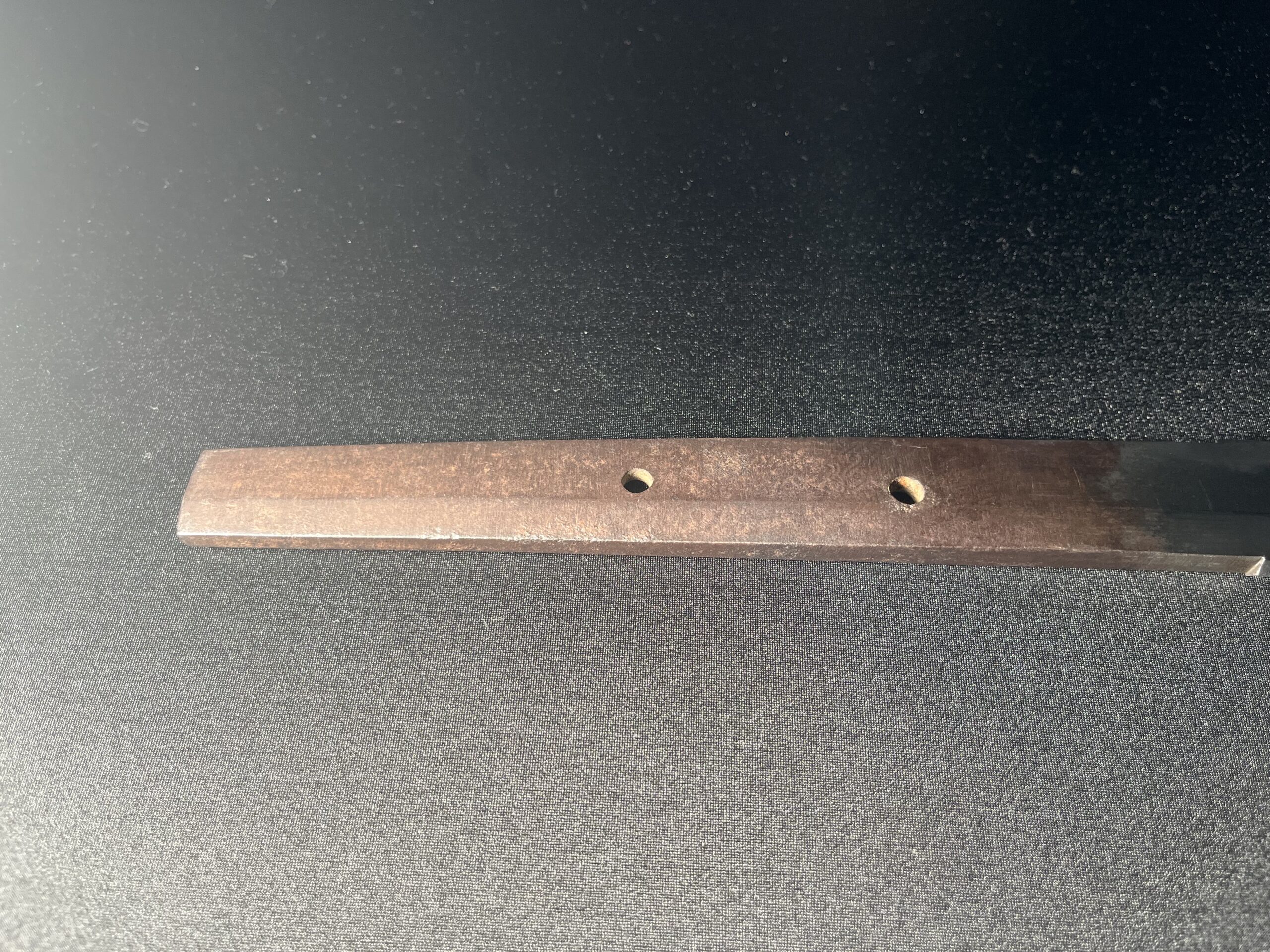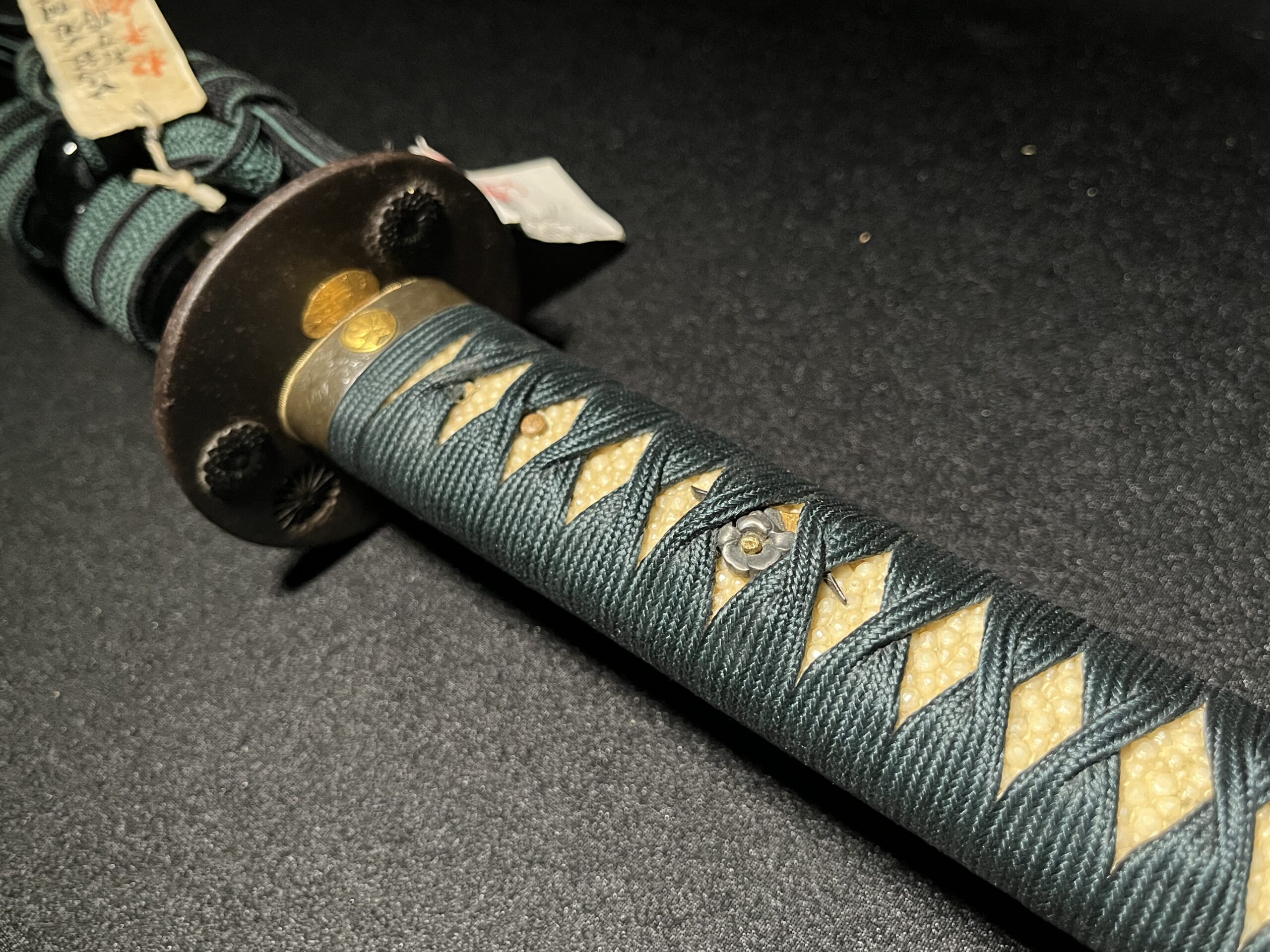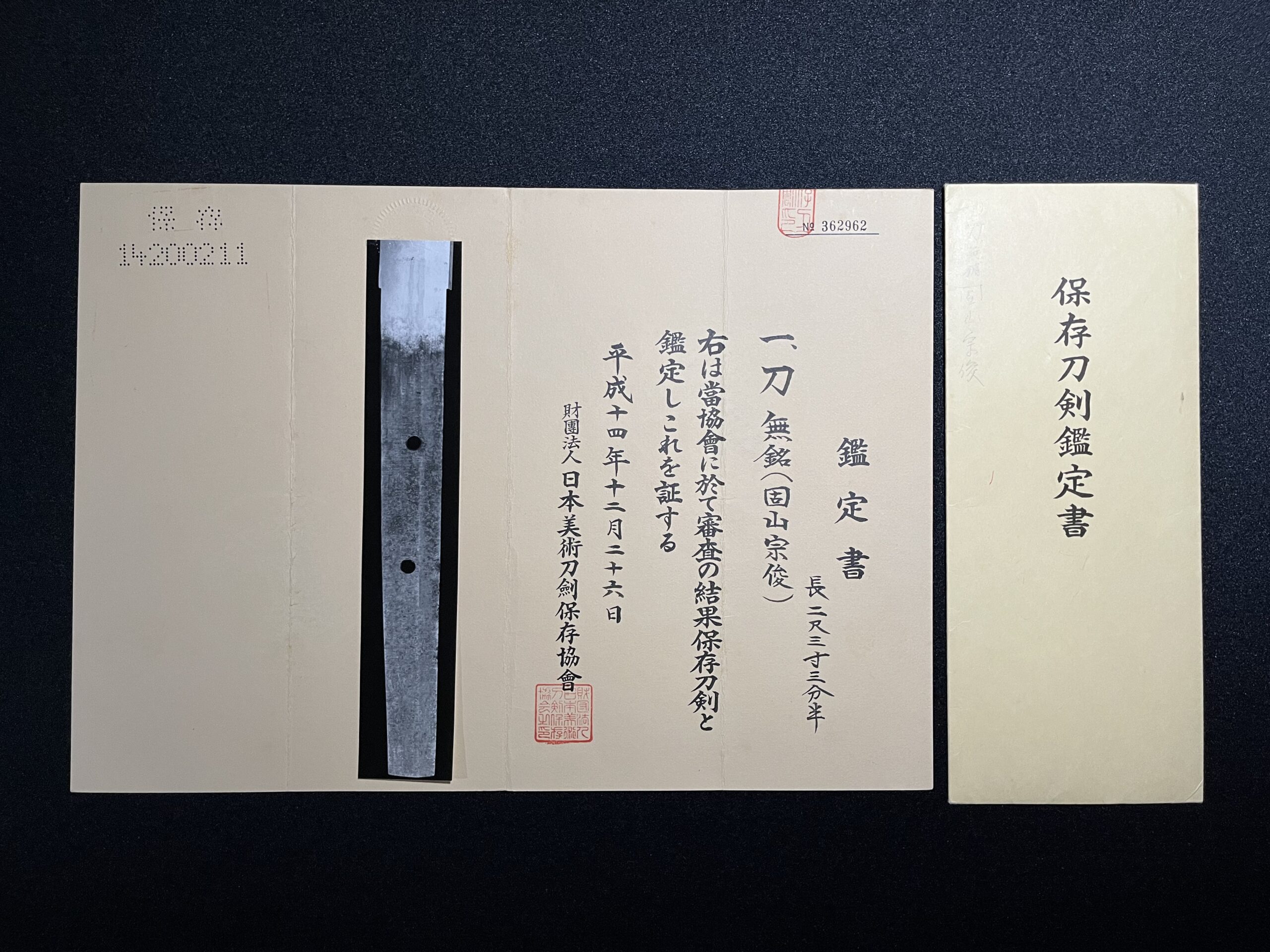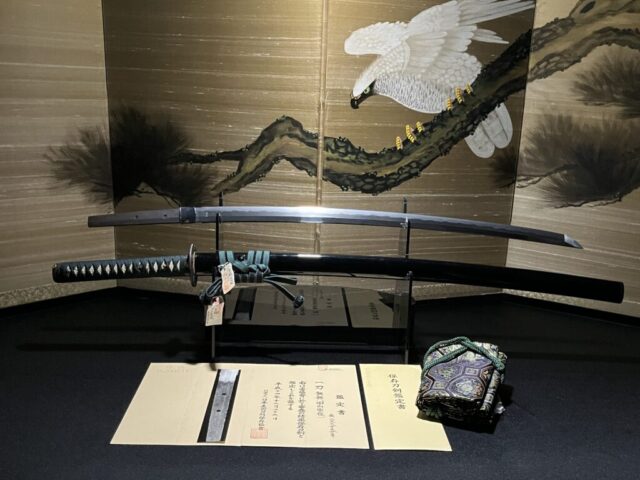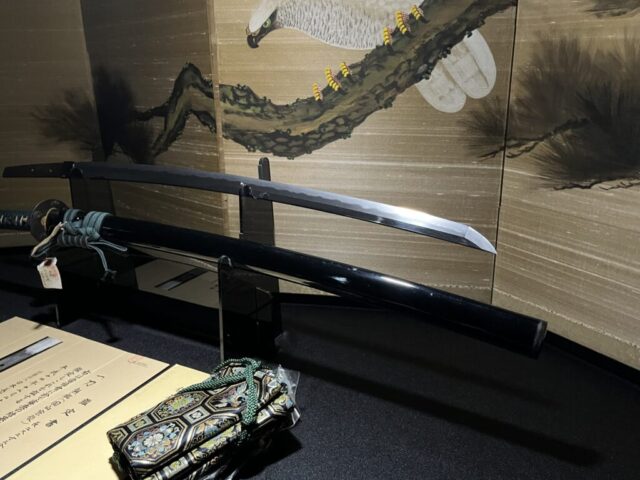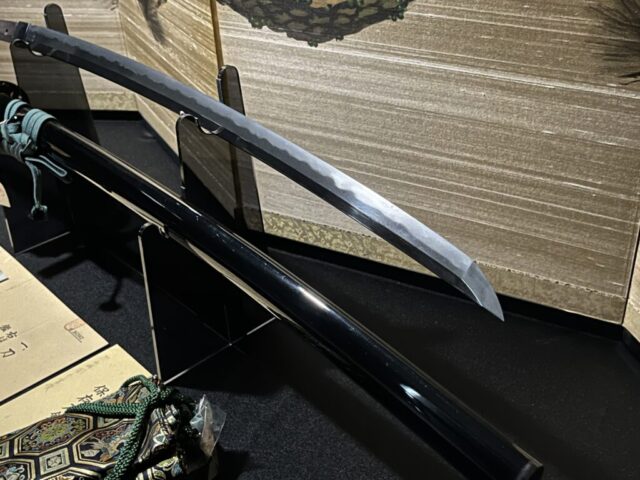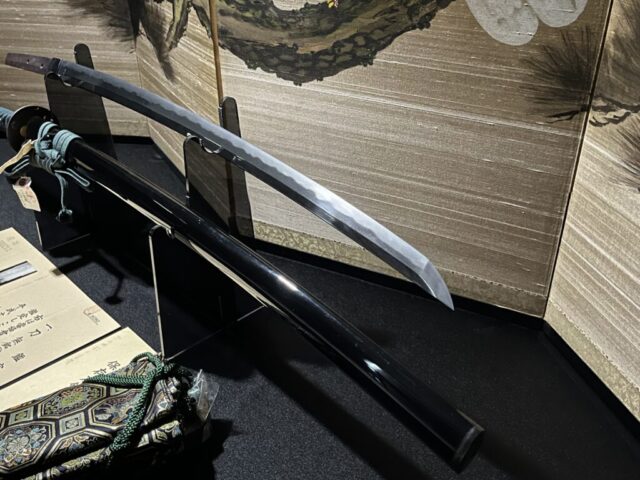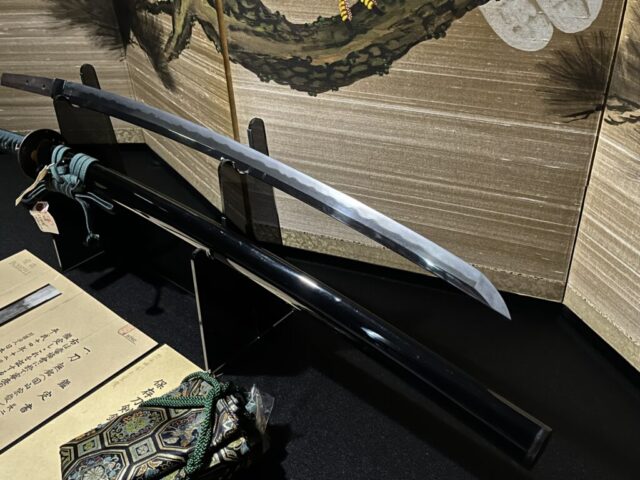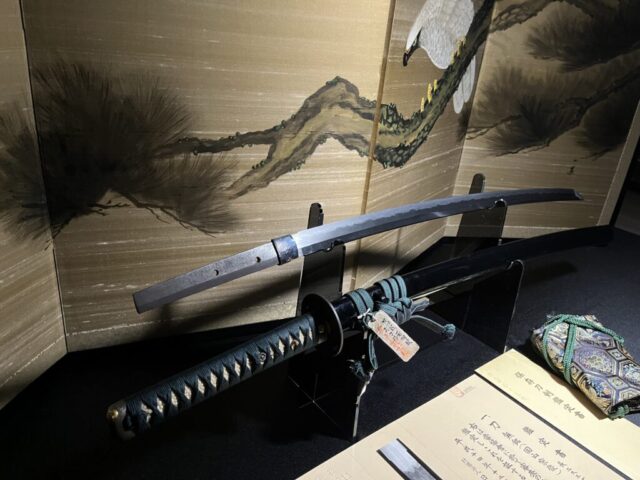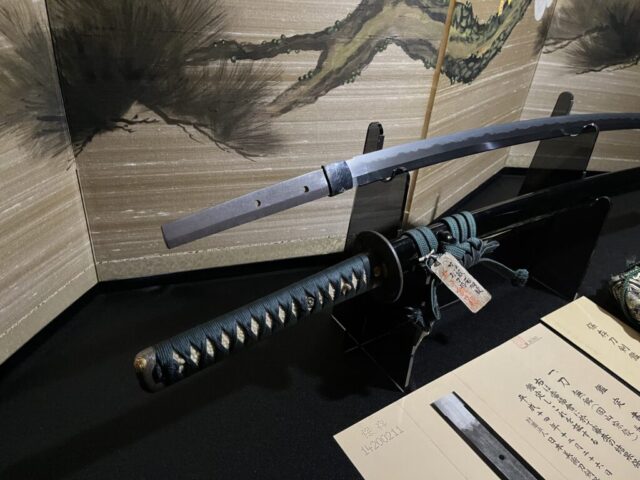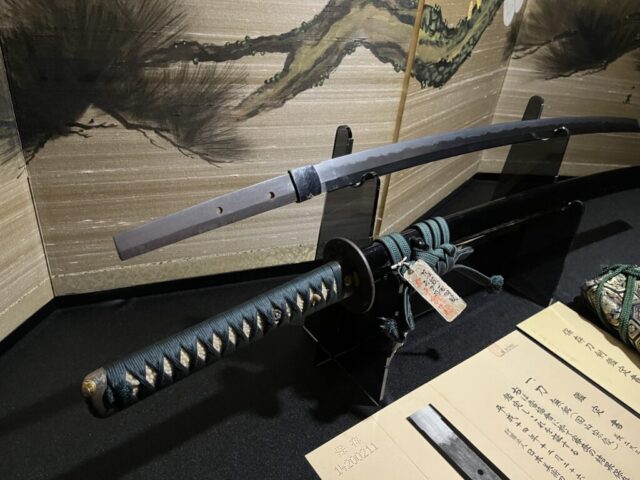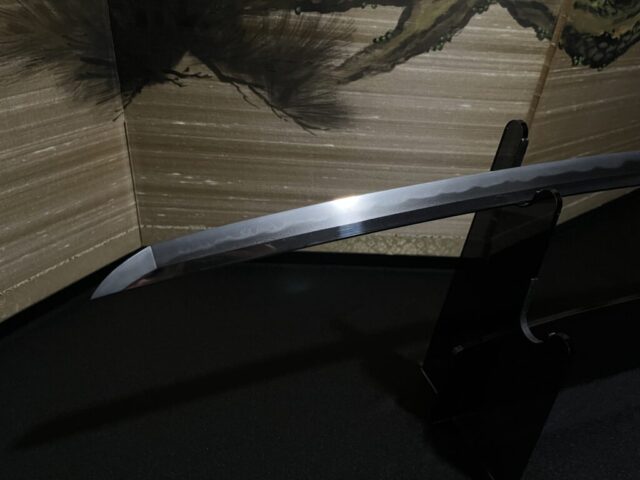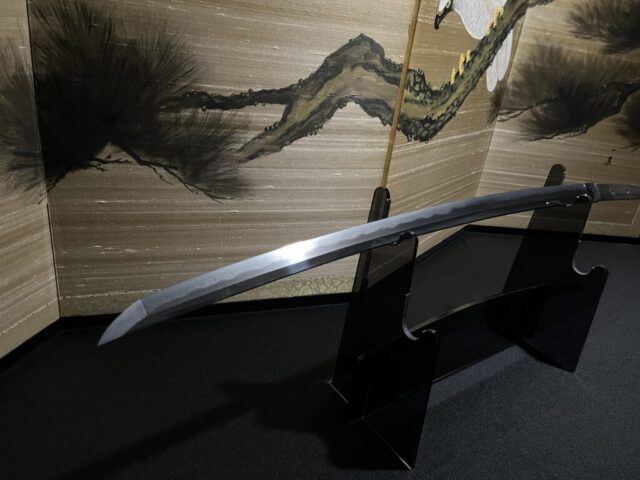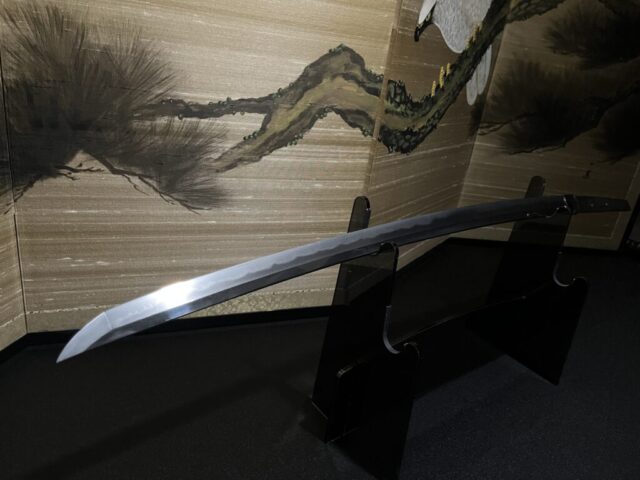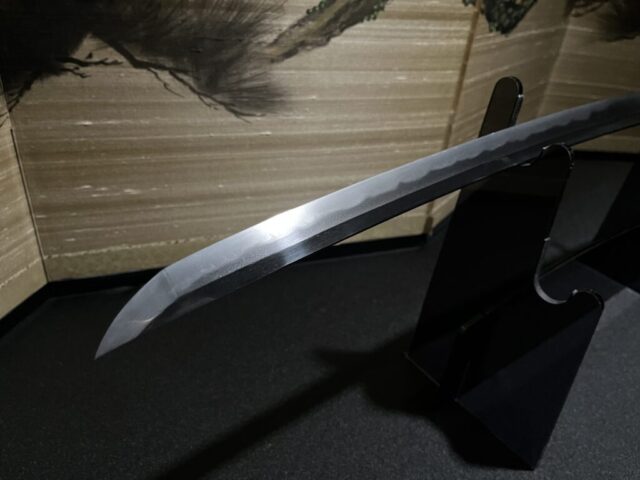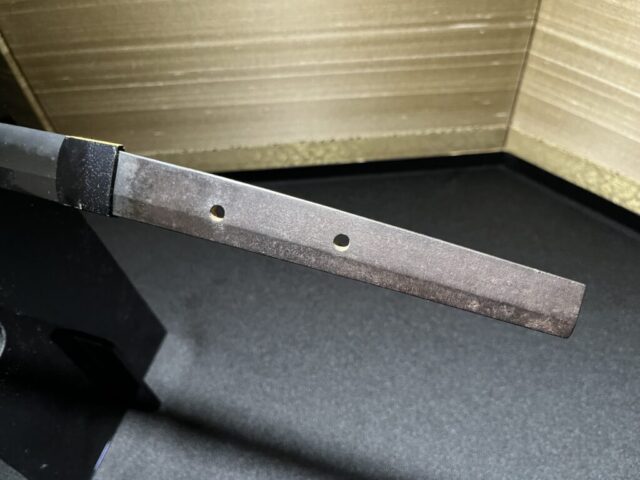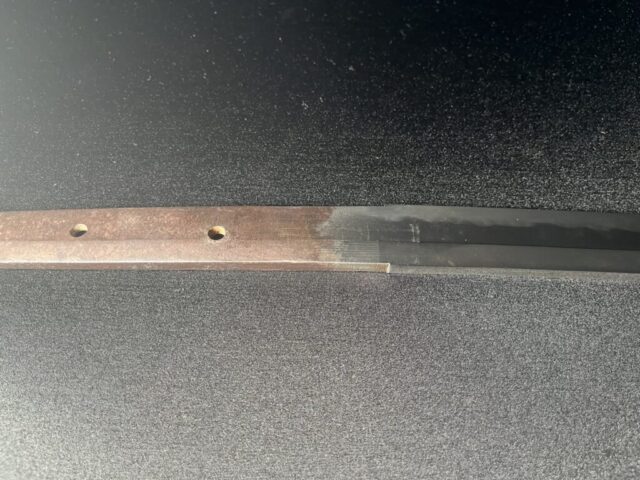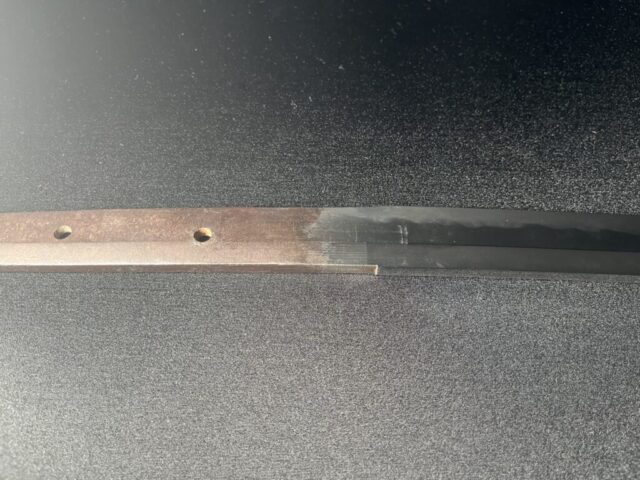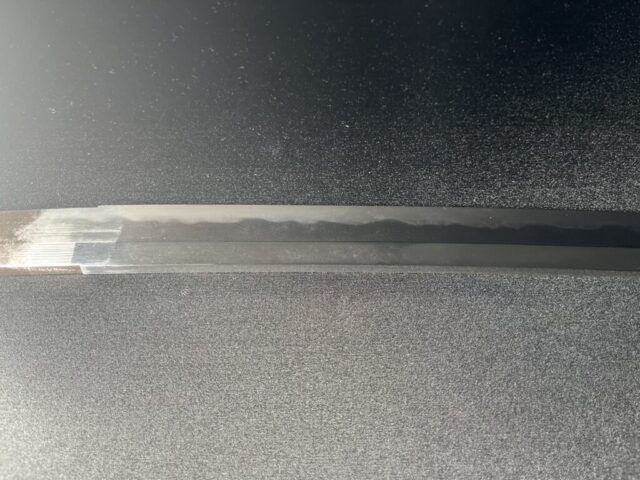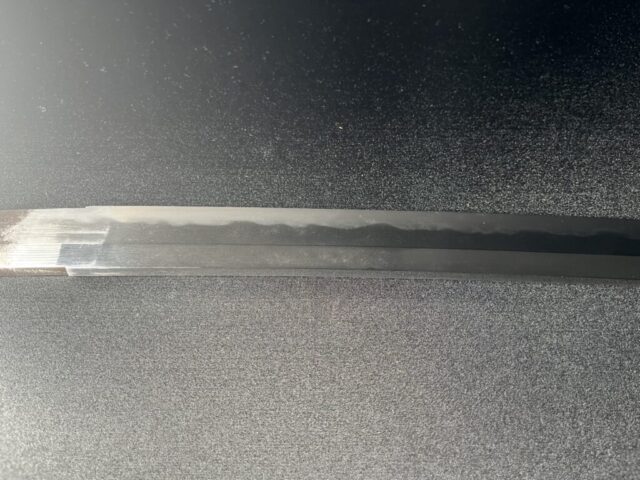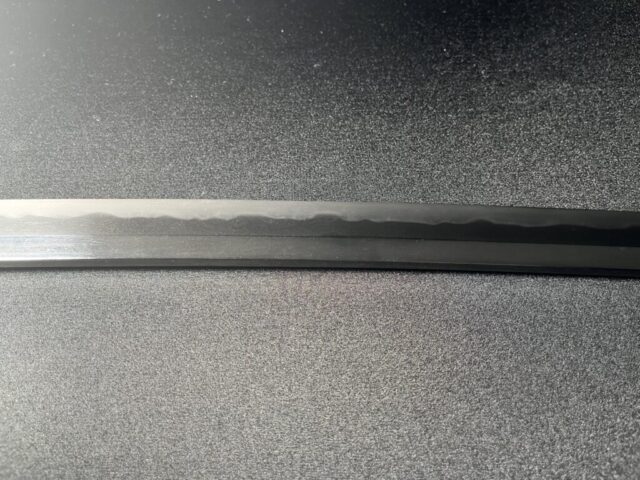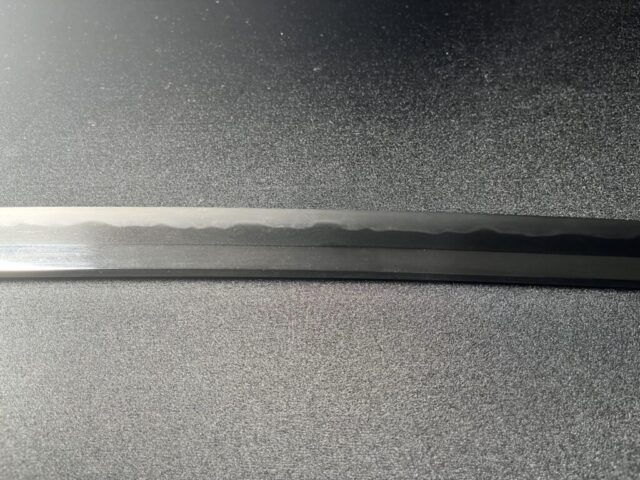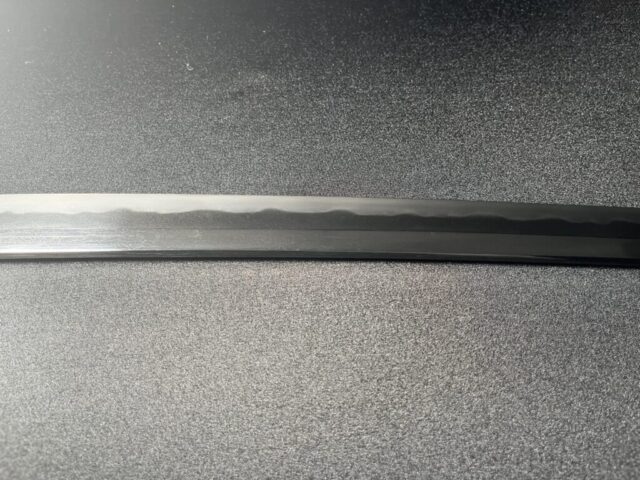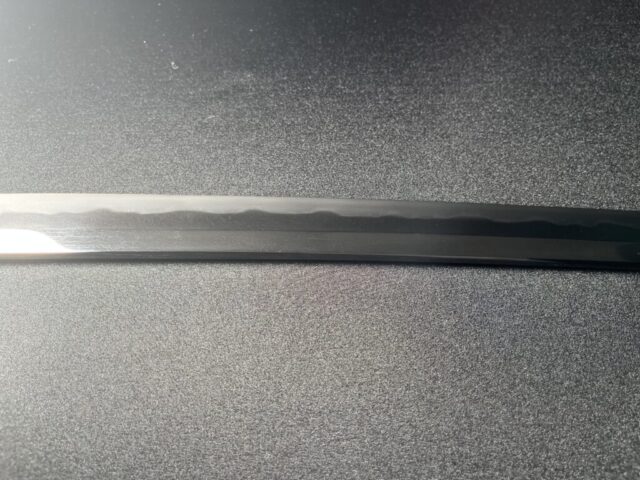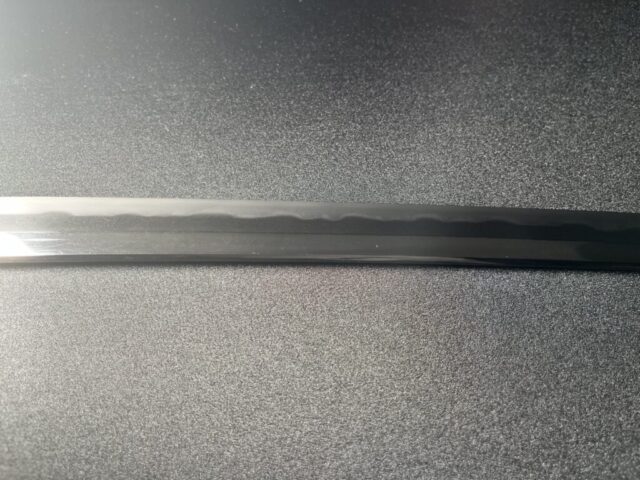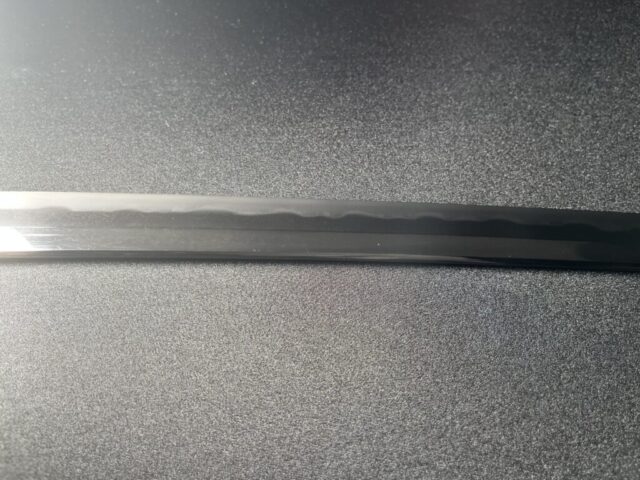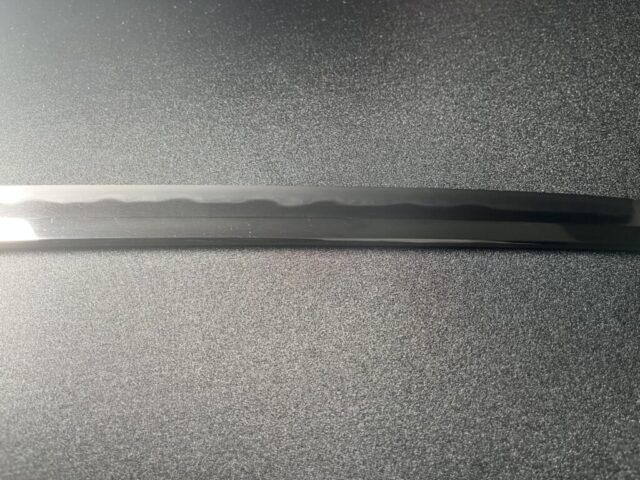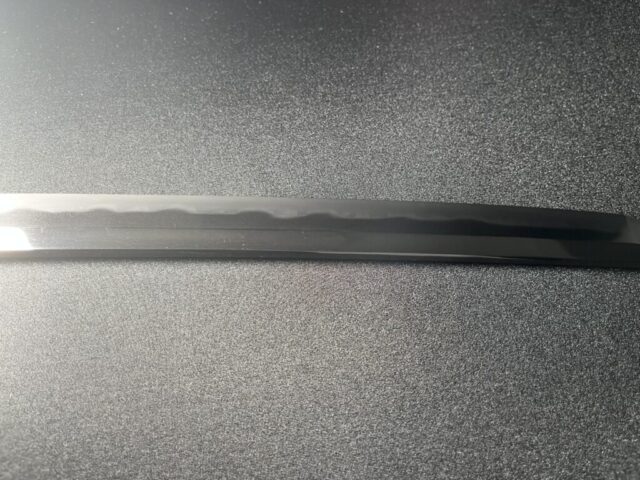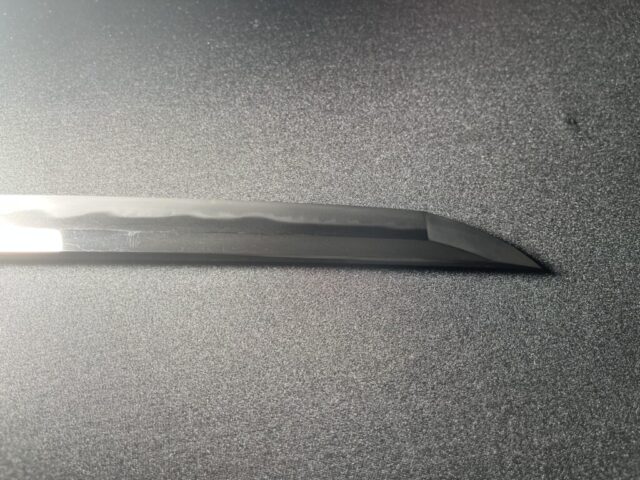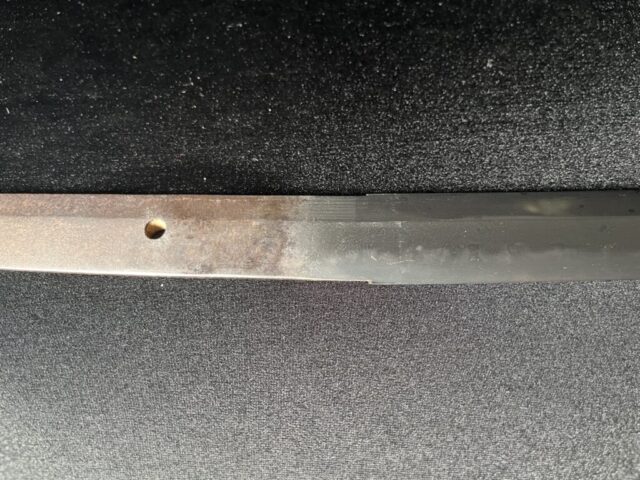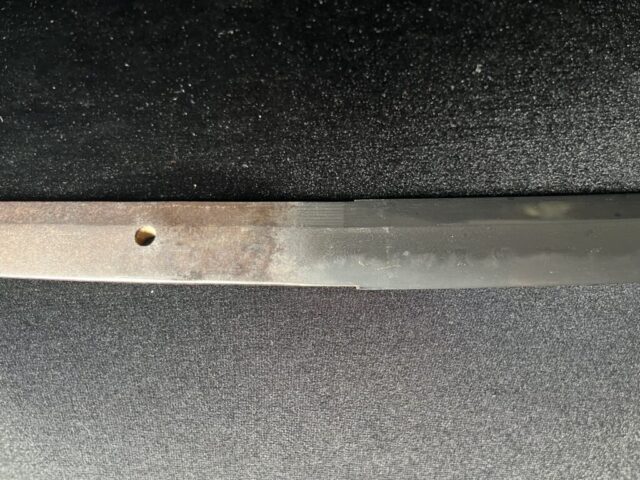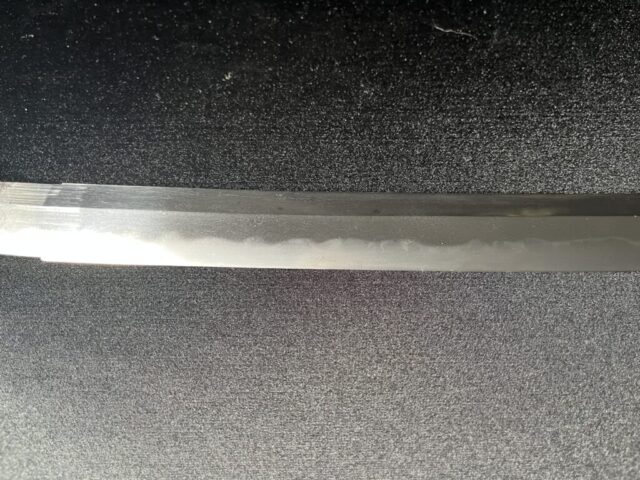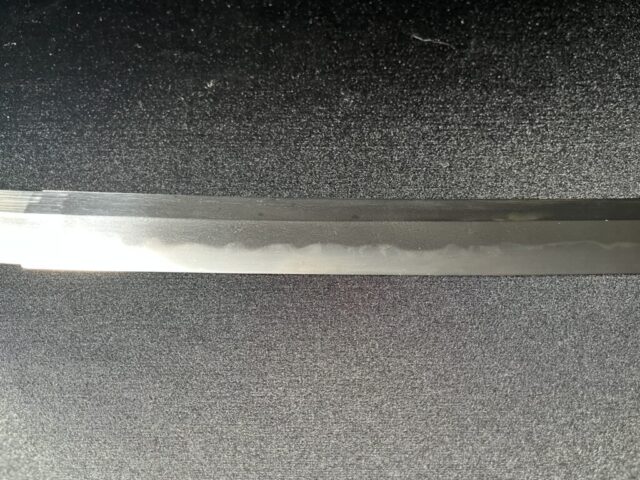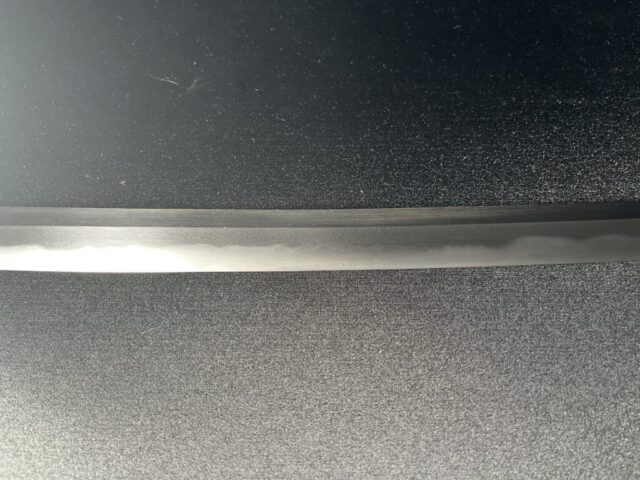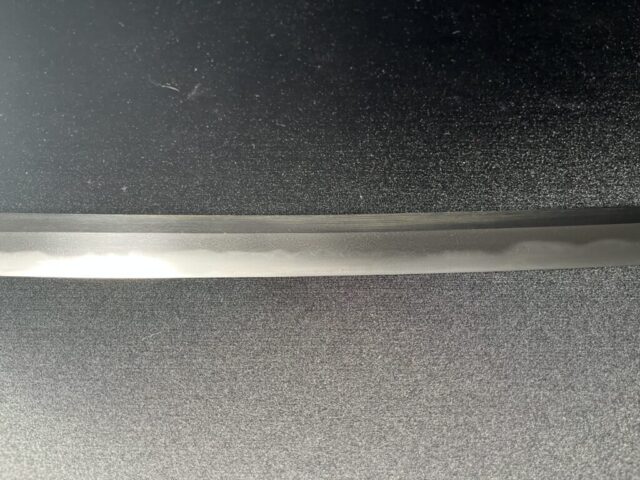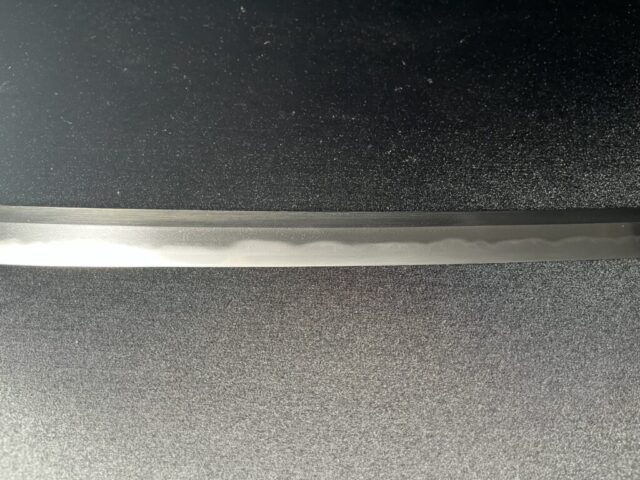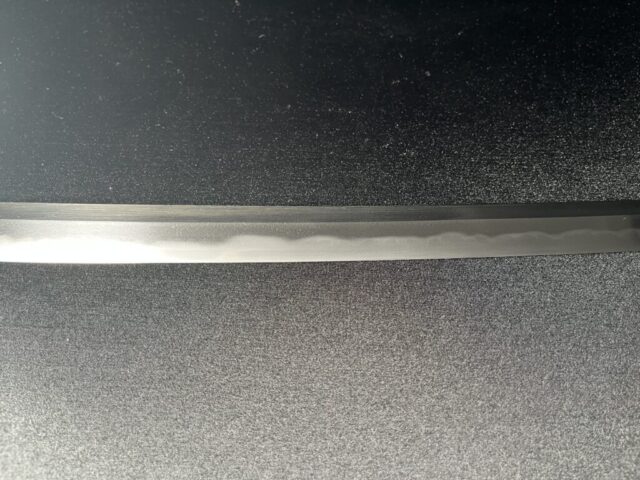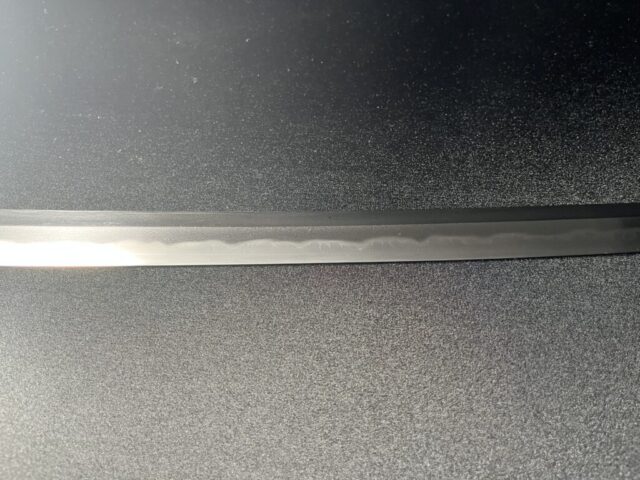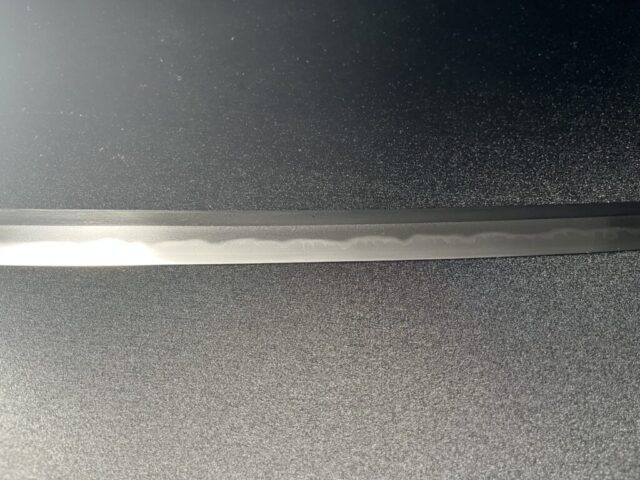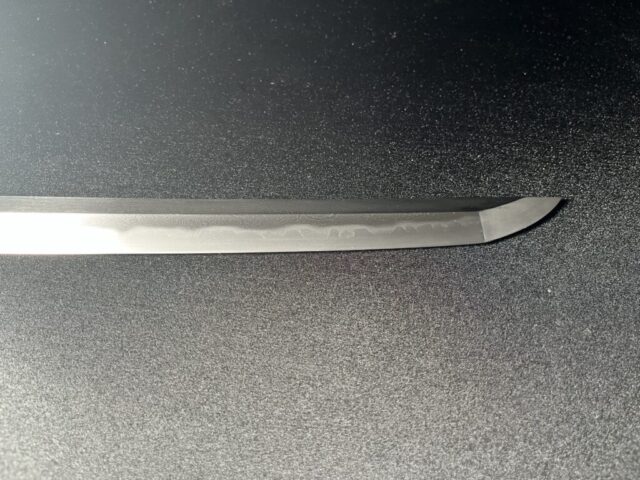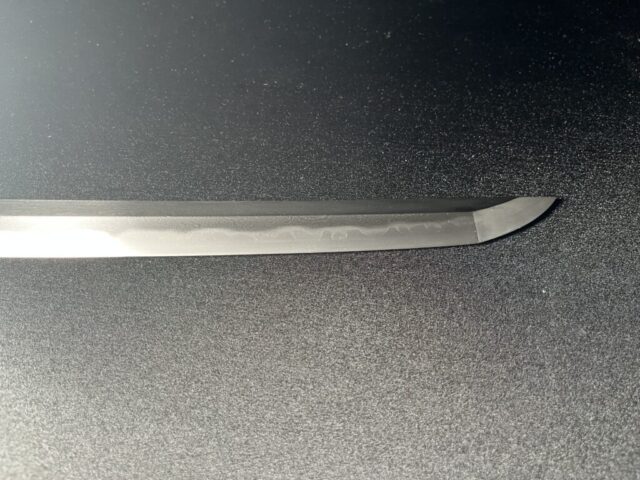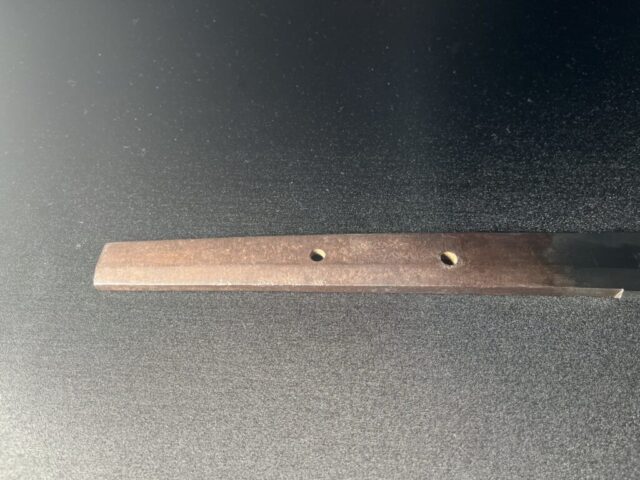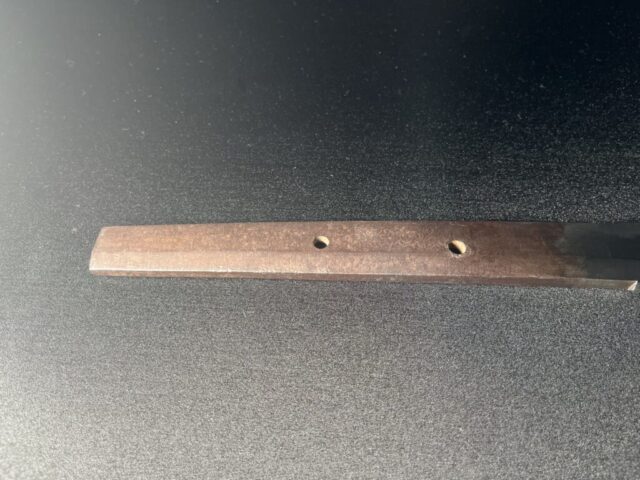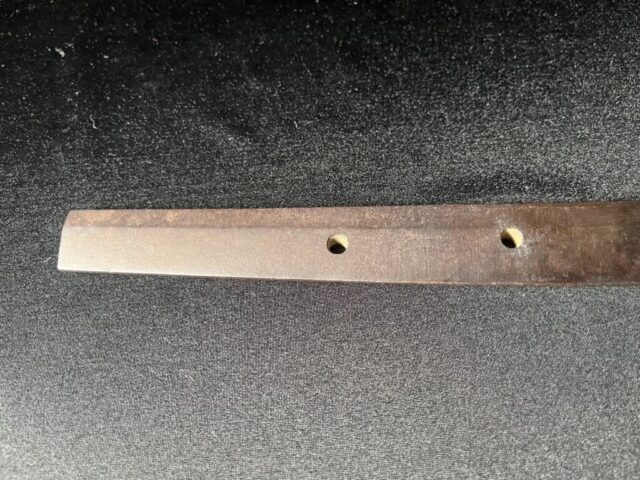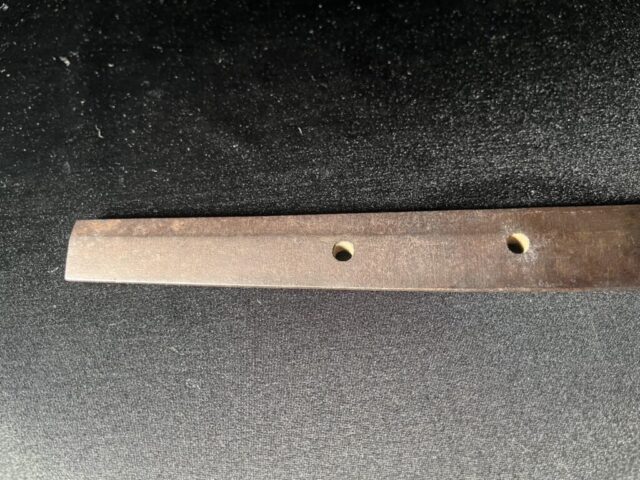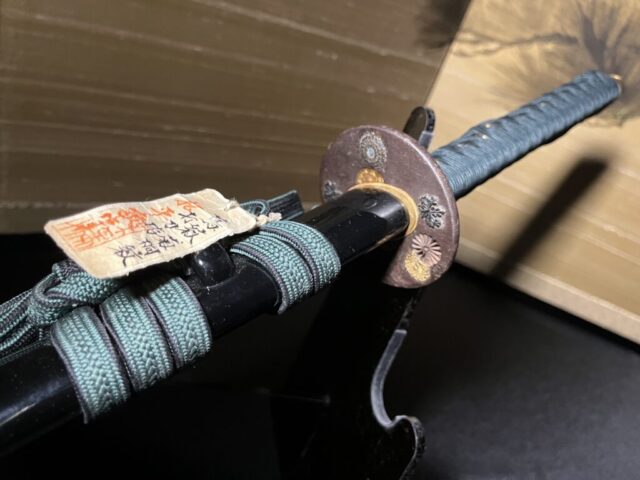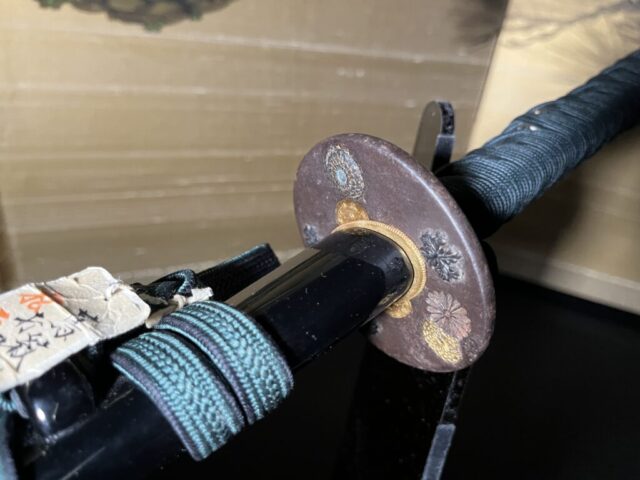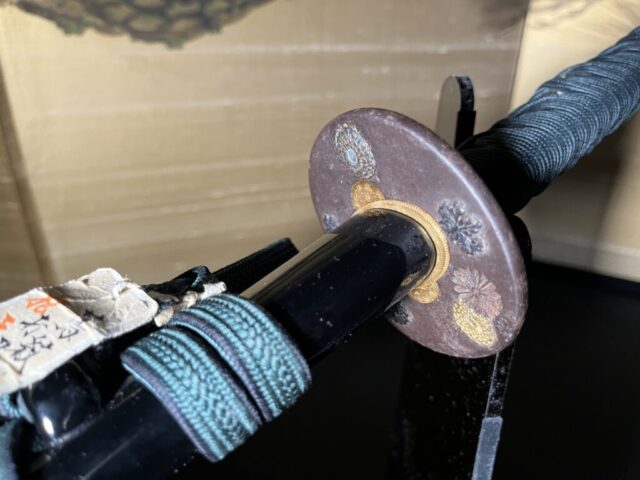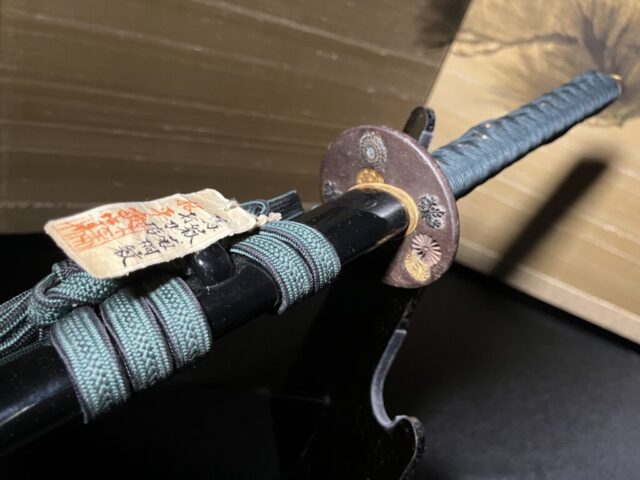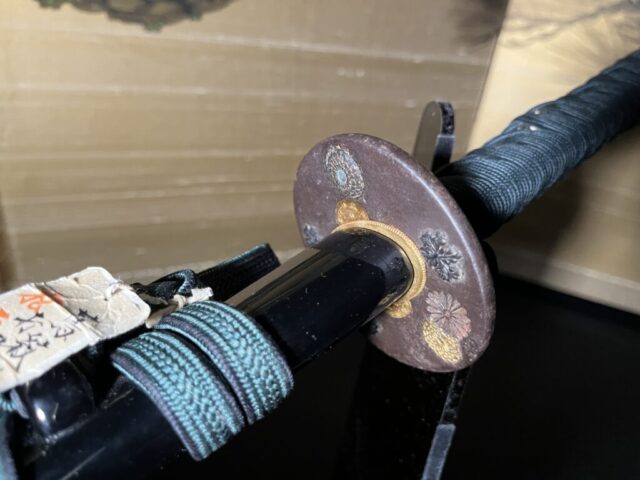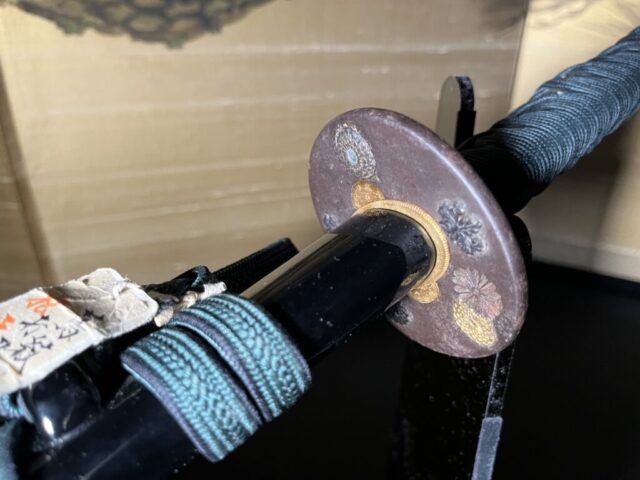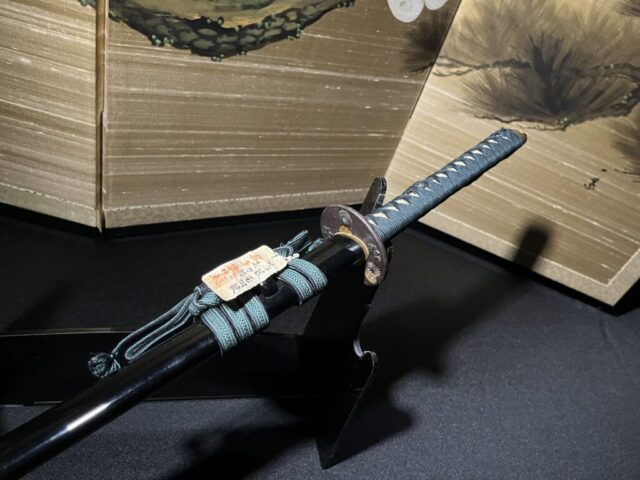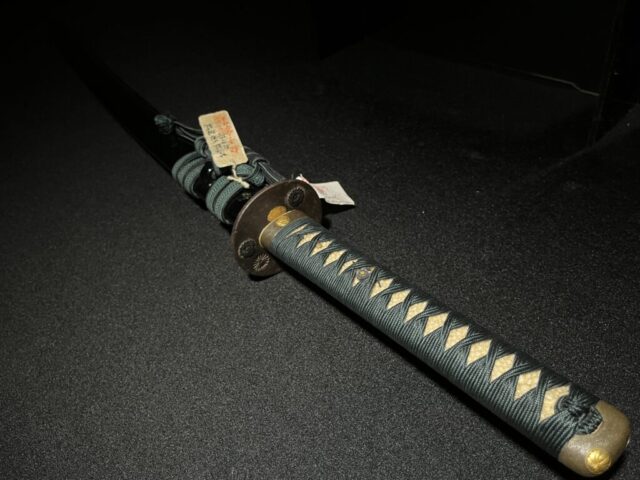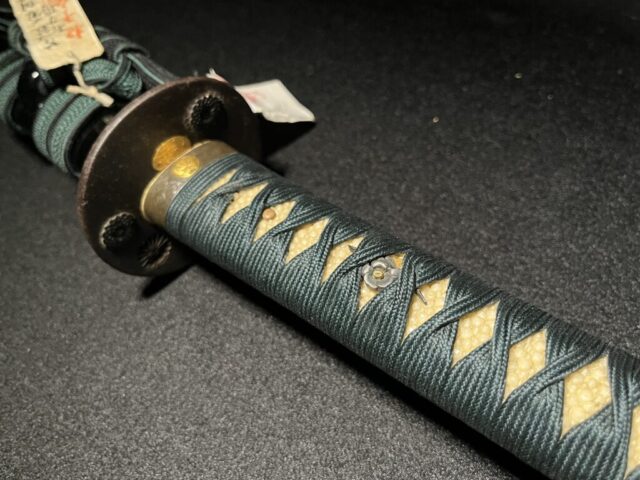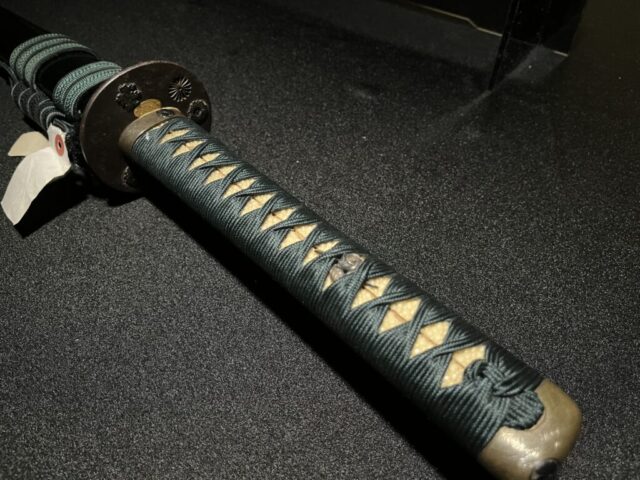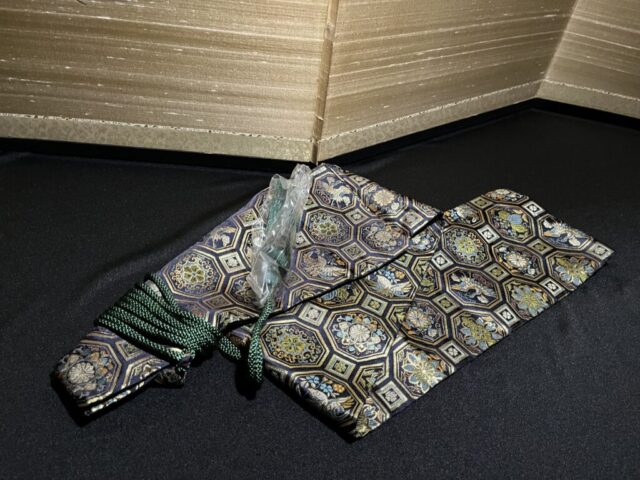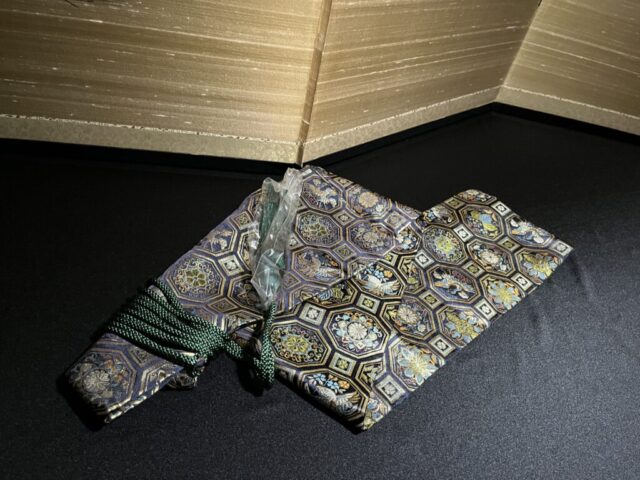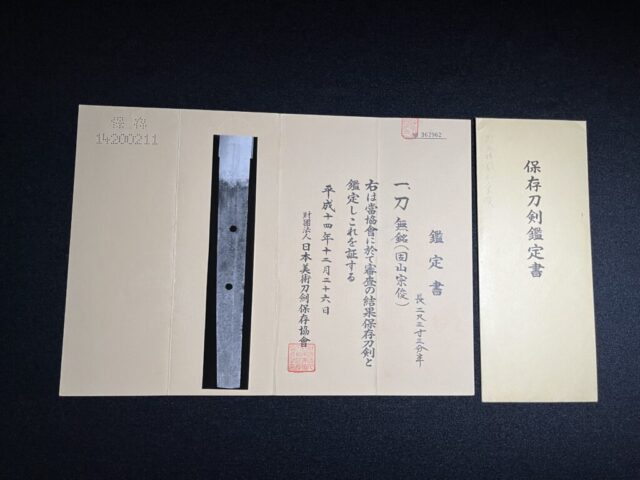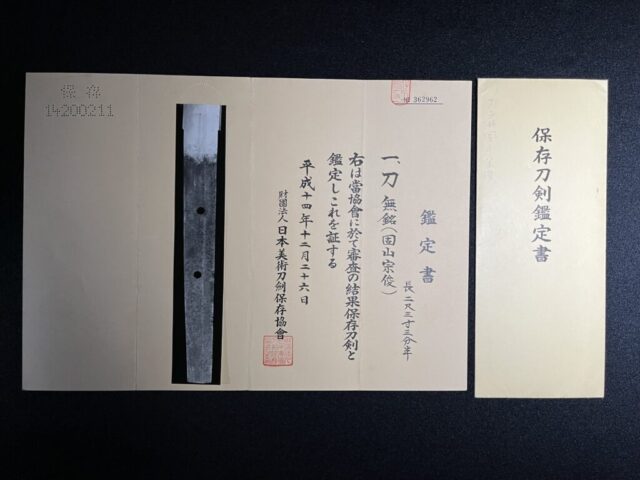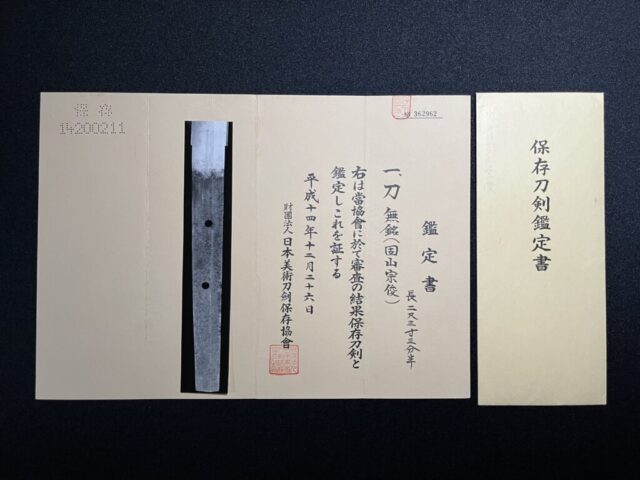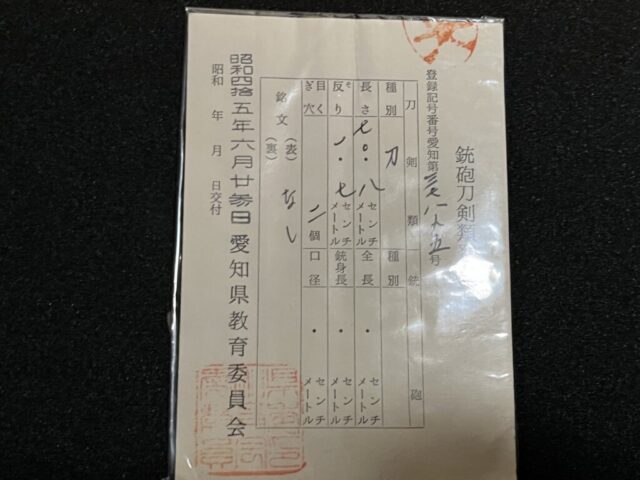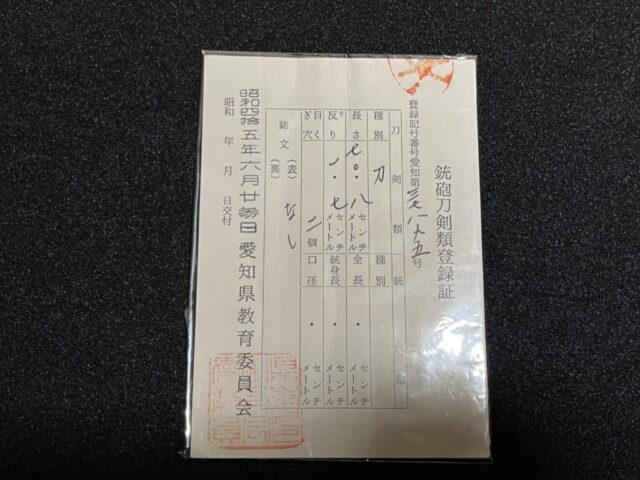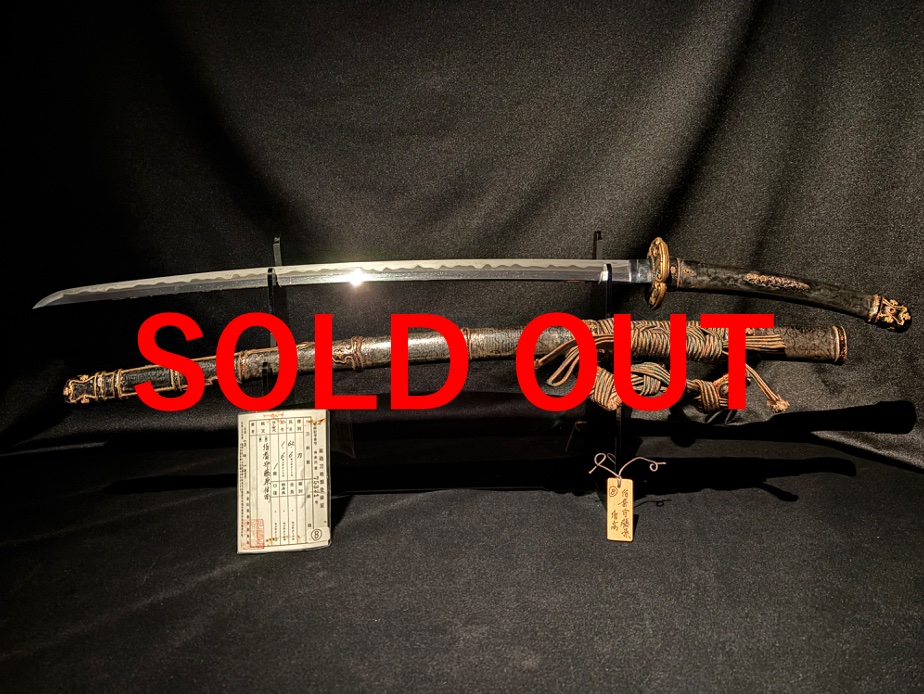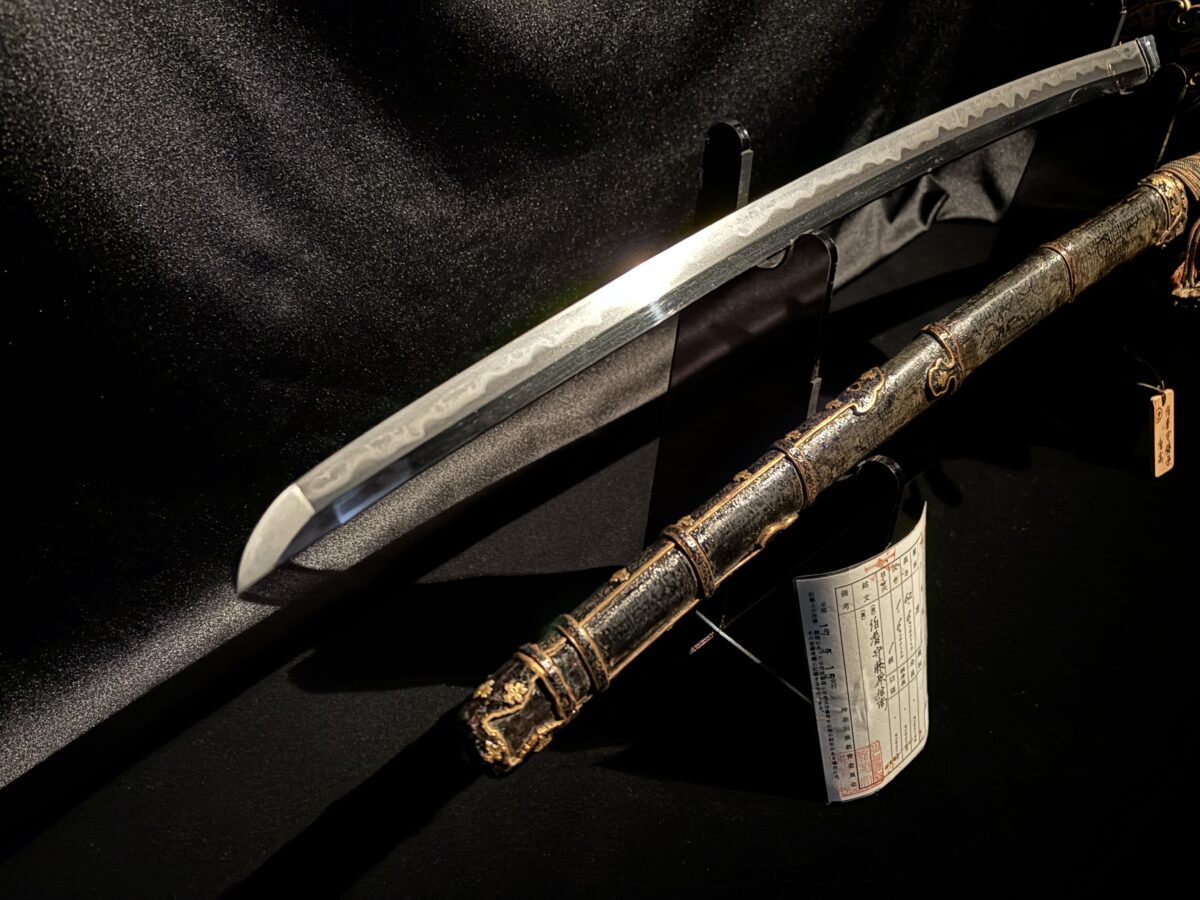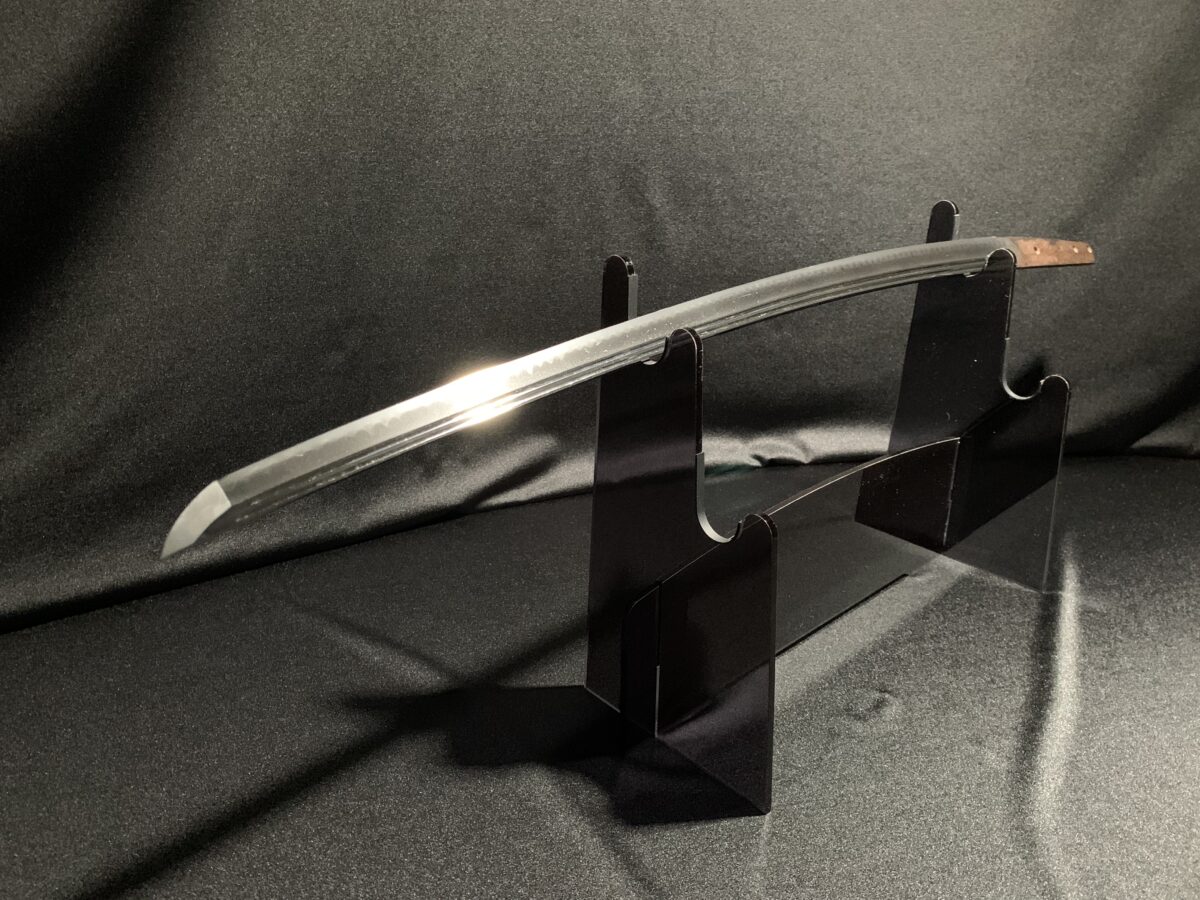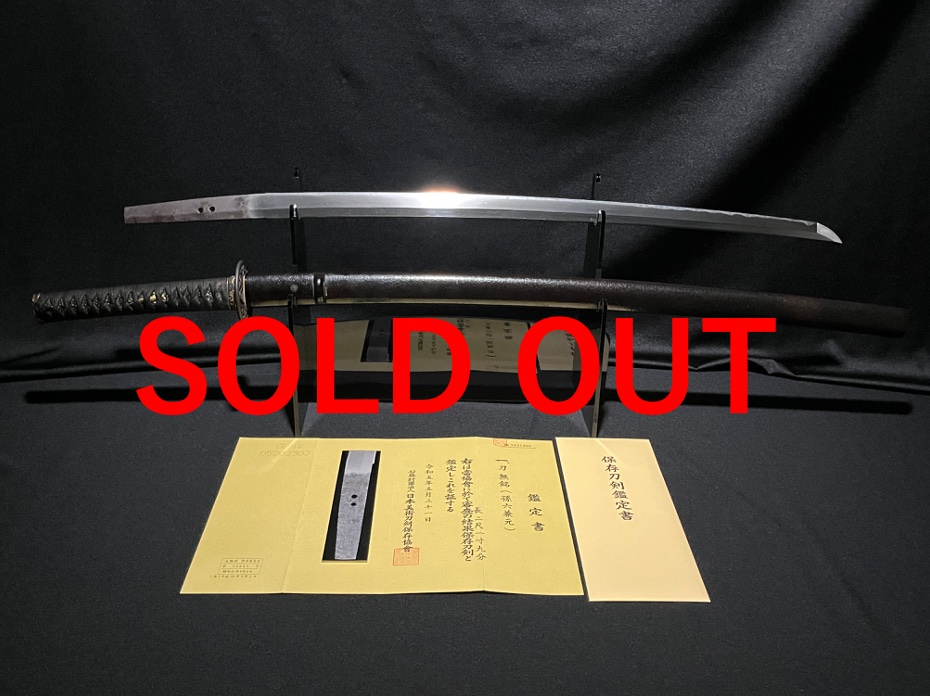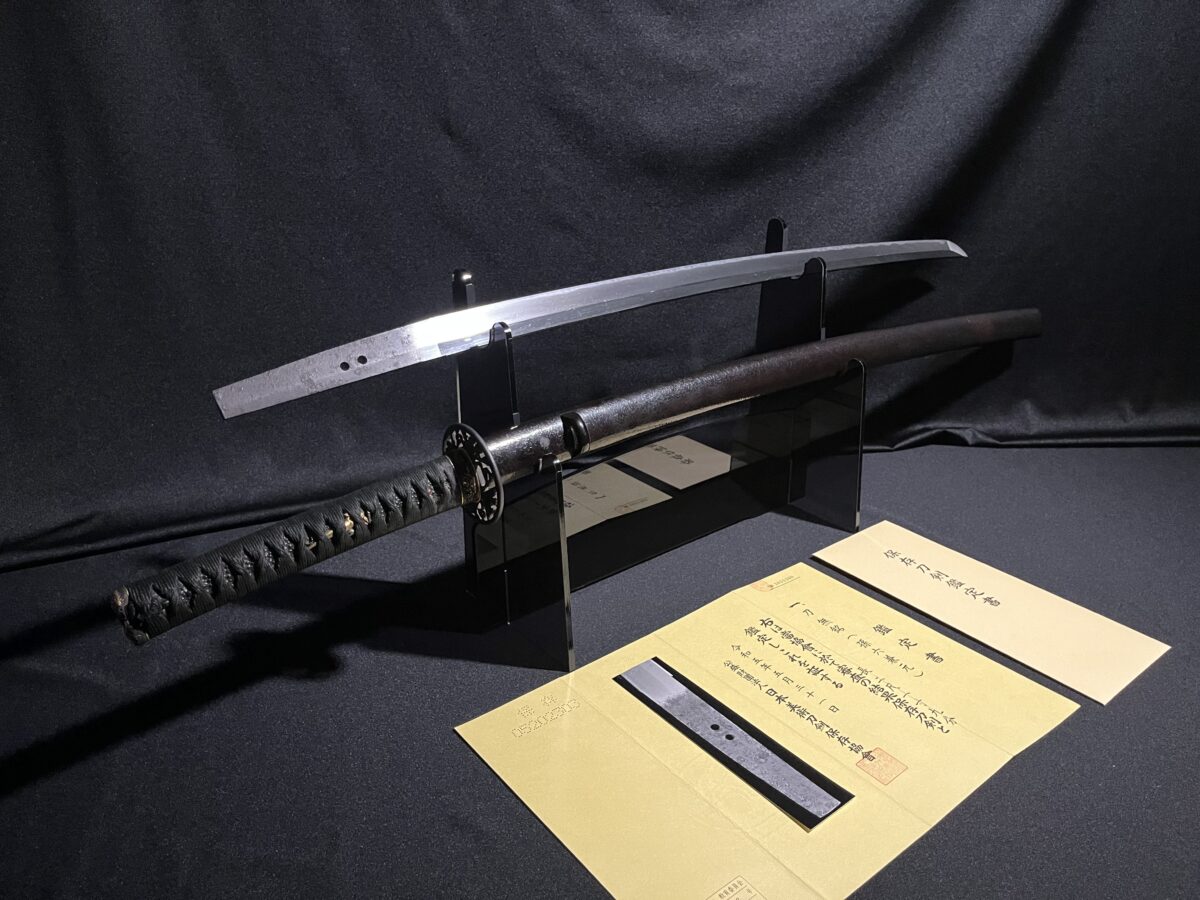Koyama Munetoshi(固山宗俊) – Authentic Katana(1854-1868)
Description
From the Katana Enthusiast

Koyama Munetoshi(固山宗俊) produced swords for only about 15 years, making his works extremely rare today. This Katana is in good condition and is a valuable example of his limited surviving pieces.
Katana Certificate of Authenticity and Registration
This Katana has been certified as a Hozon Token (保存刀剣) by the NBTHK (Nihon Bijutsu Token Hozon Kyokai), Japan’s most prestigious sword appraisal organization.
A Hozon Token (保存刀剣) is a Japanese sword that has been officially designated as “worthy of preservation” based on its historical value, craftsmanship, and overall condition.
The official certificate is included in the set.
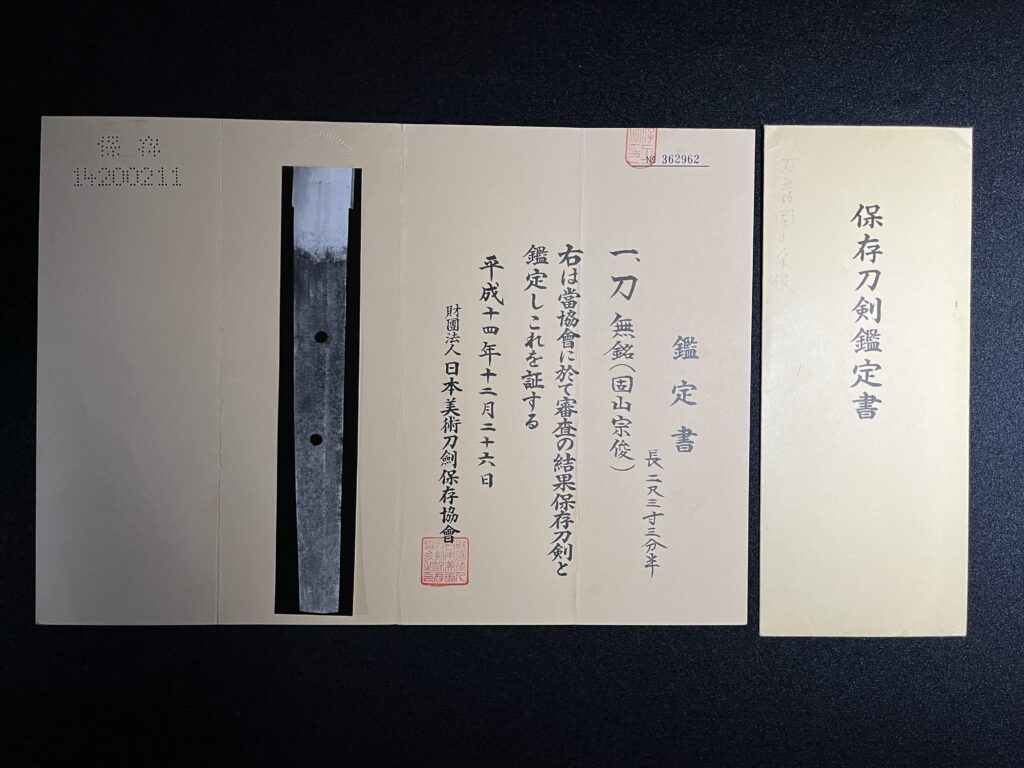
All Real Katanas are registered with the Board of Education of the prefecture in which they are located.
Please note that the original registration certificate must be returned to the Board of Education prior to export, but a copy will be enclosed with your purchase.
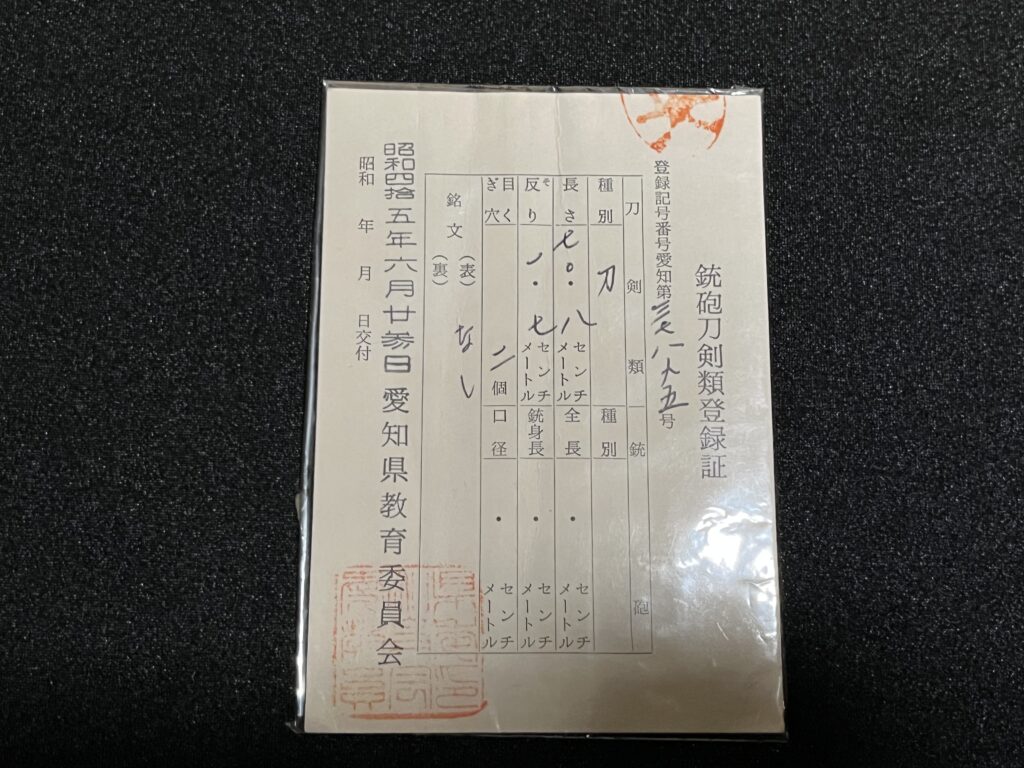
Each part of the Katana
1. Toshin(刀身)
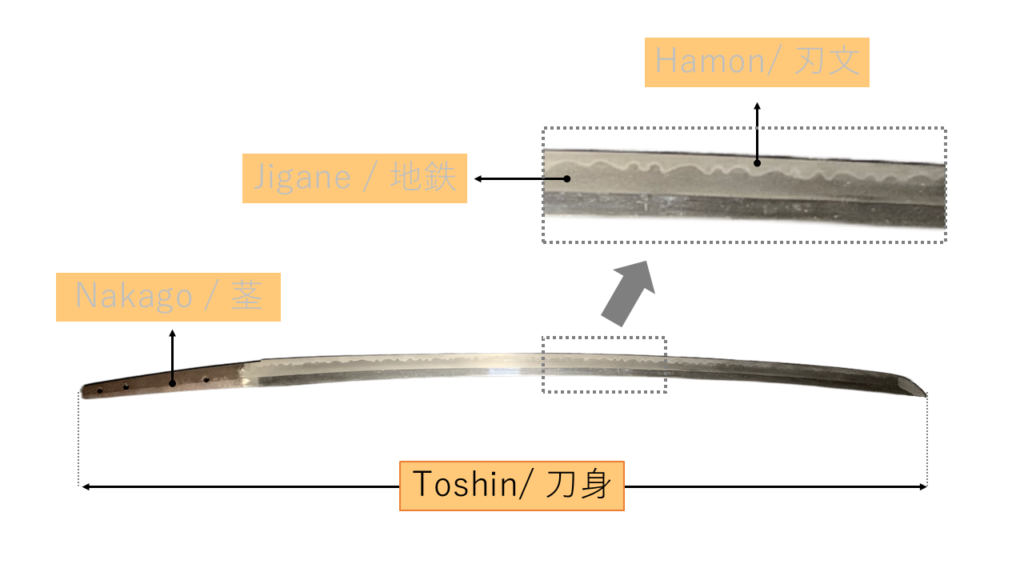
The Toshin refers to the entire blade of the Katana.
When evaluating a Katana, the blade’s length—and particularly its sori (curvature)—is a key point of appreciation.
The sori is what enables the Japanese sword to remain unbreakable and unbendable, while also allowing it to cut through objects with remarkable efficiency and minimal force.
If you’re interested in the scientific background of this, we explain the theory in detail in the following article:
Curved for a Reason: The Hidden Function of Authentic Katana’s Shape
【Toshin of This Katana】
Blade Length (Nagasa): 70.8cm
Width at Base (Motohaba) : 3.2cm
Thickness at Base (Motokasane) : 0.7cm
Curvature (Sori): 1.7cm
2. Hamon(刃文)
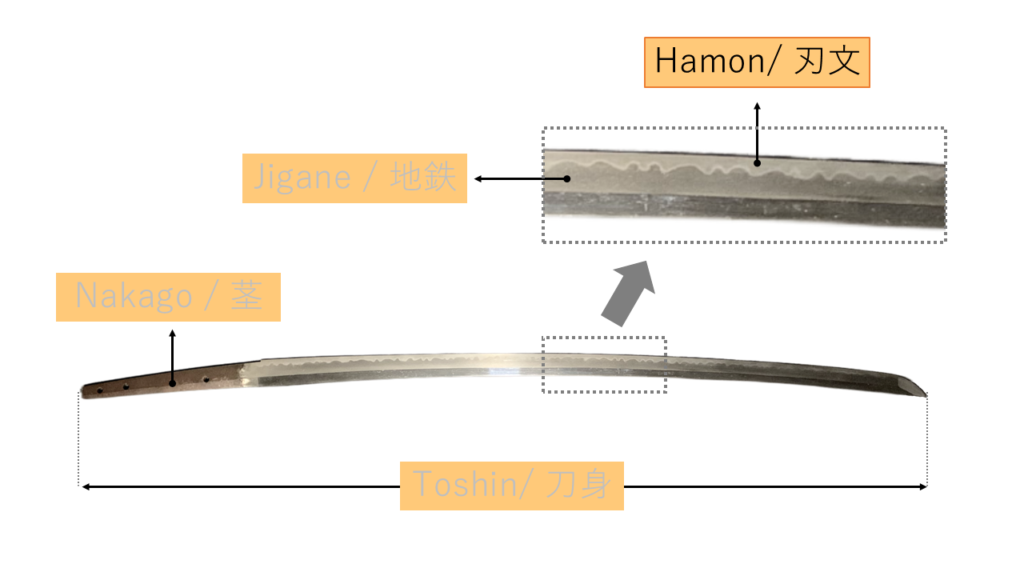
The Hamon is a white, wave-like pattern that appears along the edge of an authentic Katana blade.
There are two primary types of Hamon: the straight-line Suguha, and the more irregular, wavy Midareba.
While these can be further classified into many subtypes, the Hamon is a key element in sword appraisal, as it reflects the unique characteristics and techniques of the swordsmith.
It’s also one of the most visually enjoyable features of a Katana, making it fun to choose a blade based on the Hamon that resonates with you.
【Hamon of This katana】
3. Jigane(地鉄)
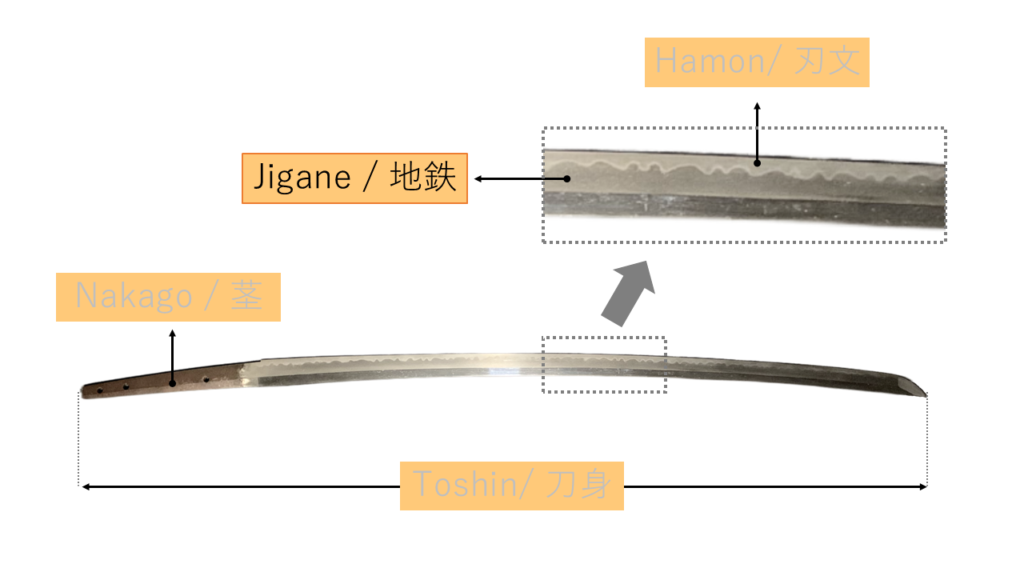
Jigane refers to the intricate surface patterns that appear on the blade of a Katana.
These patterns are created when tamahagane—steel made from iron sand, the raw material—is repeatedly folded and forged.
Each Katana reveals a unique Jigane pattern, offering a window into the artistry and technique of its maker.
【Jigane of this katana】
4. Nakago(茎)
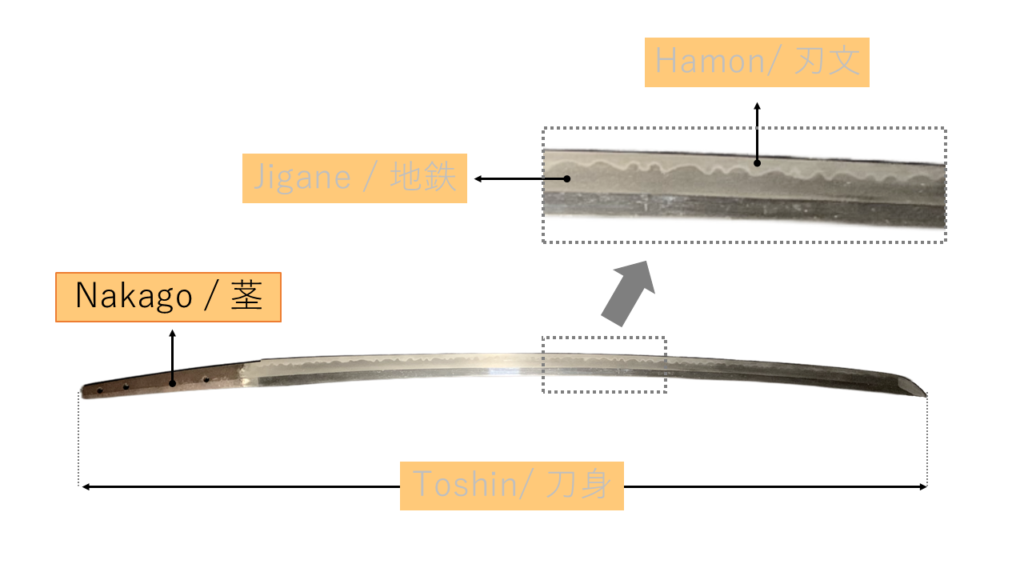
The Nakago is the tang of the Katana—the part of the blade that extends into the handle.
It often bears a mei (銘), or signature, which may include the name of the swordsmith and the date of its creation.
【Nakago of This katana】
5. Tsuba (鍔)
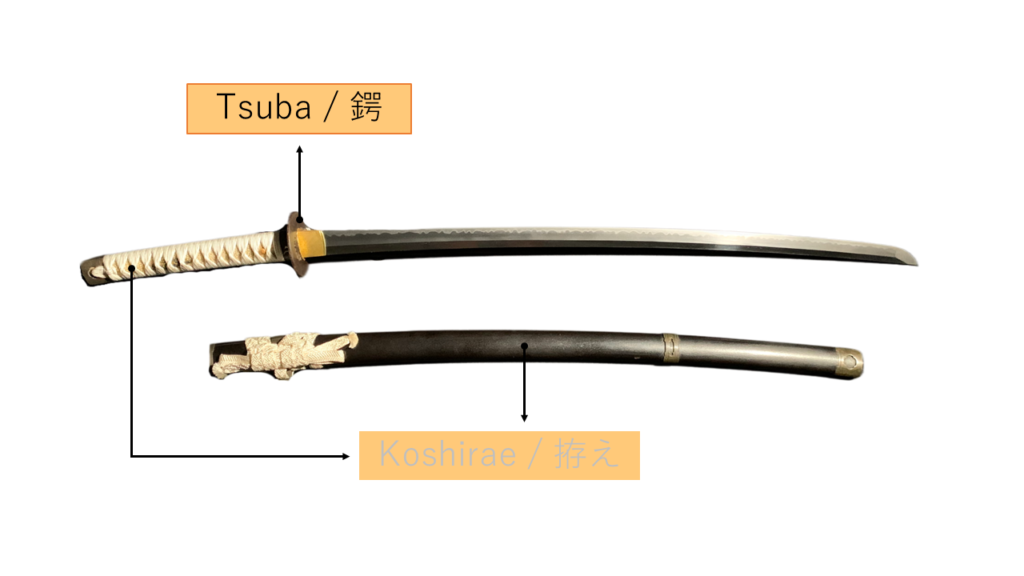
The Tsuba is a metal guard positioned between the Toshin (blade) and the handle. Its primary function is to protect the wielder’s hand from an opponent’s blade during combat.
Conversely, it also prevents the hand from slipping forward onto the blade during a strike.
In addition, the Tsuba helps to balance the Katana by adjusting its center of gravity.
There are many different styles of Tsuba, ranging from purely functional to highly decorative.
Some are so exquisitely crafted that they are recognized as valuable works of art—with certain Tsuba designated as Important Cultural Properties by the Japanese government.
【Tsuba of This katana】
6. Koshirae(拵え)
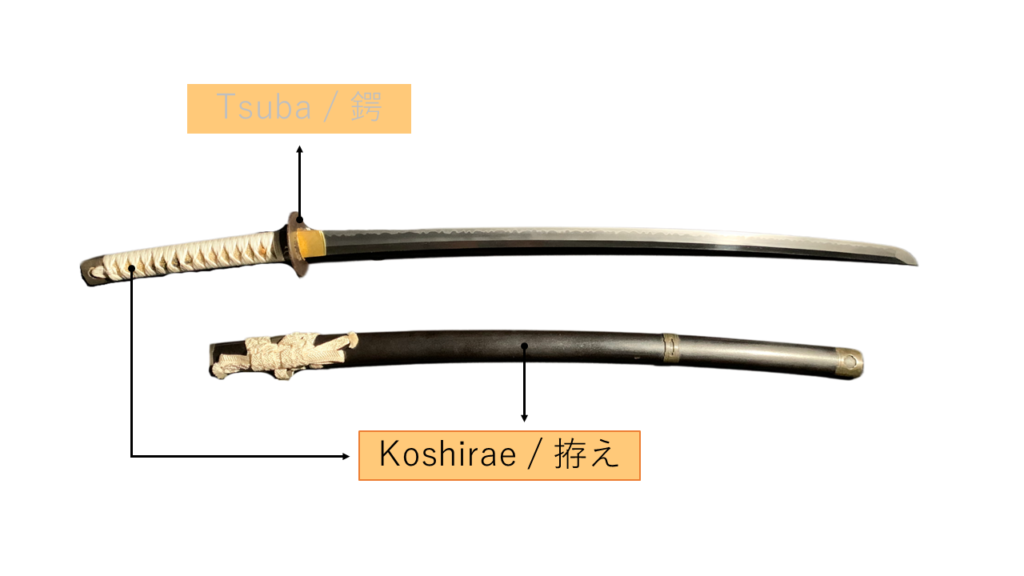
Koshirae refers to the complete exterior mountings of a Katana, including the handle (tsuka), guard (tsuba), and scabbard (saya).
There are two main styles of Koshirae: Uchigatana Koshirae (打刀拵) and Tachi Koshirae (太刀拵). Because each Katana differs in length, curvature, and proportions, a unique Koshirae is custom-made to perfectly match each blade.
The Koshirae itself is considered an important work of art.
We hope you’ll enjoy appreciating it as a complete expression of the Katana’s beauty and balance.
【Koshirae of This Katana】
About Koyama Munetoshi (固山宗俊)
Koyama Munetoshi (固山宗俊) was a swordsmith born in Mutsu Province (陸奥国). Although he later moved to Musashi Province (武蔵国), he is generally regarded as a swordsmith of Mutsu.
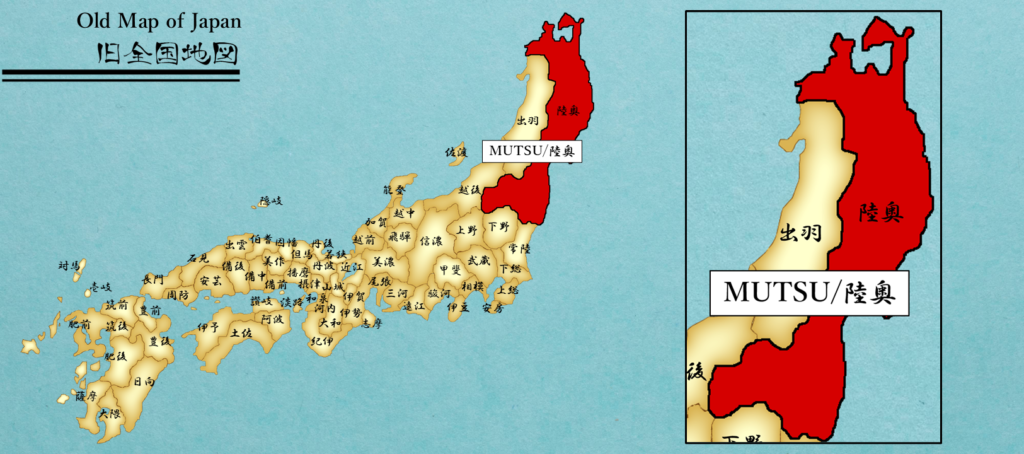
Koyama Munetoshi was a swordsmith of the family of Koyama Munetsugu, a master swordsmith of the late Edo period.
It is believed that the period during which Munetoshi was making swords was from 1854 to 1868.
His master, Munetsugu, was a swordsmith employed by the Matsudaira family, the lord of the Shirakawa domain. Later, his skills were highly regarded, and he even worked as a swordsmith for the Owari clan.
Munetsugu was such an excellent swordsmith that he is also known as the best of the Bizen-den(備前伝) swordsmiths in the Shin-shin-to(新々刀) period.
It is said that Munetoshi’s skills were highly regarded and that he sometimes left behind works that surpassed those of his masters.
It is truly regrettable that he was forced to give up sword making due to the decree to abolish swords in the Meiji era. Therefore, there are only a few surviving pieces of his work, and each one is a valuable legacy of his work.
Buyer’s Guife
Authentic Katanas are limited in number, and we hope each one finds its way to a collector who truly appreciates its value.
Before making a purchase, please take a moment to review our [Buyer’s Guide] for important information.
Shipping Information
1.Time Required for Delivery
This is a truly domestic Japanese sword that has never left Japan.
In order to export it overseas, we must obtain an official export permit from the Agency for Cultural Affairs of Japan.
It typically takes around 25 business days from the time of payment until the export process begins.

After shipment, delivery usually takes 7 to 20 days, depending on the destination country.
2.Shipping Charges
Shipping is free of charge.
We offer international shipping to most countries, with the exception of China and Russia.
3.Regarding Imports
Please check with your local customs office regarding regulations on importing Japanese swords.
We are not responsible for delays, rejections, or seizures by customs in the destination country.
For more details, please refer to our dedicated [Shipping Information] page.
Payment
You may complete your purchase via PayPal or by making a direct bank transfer to our account.
All prices are tax-exempt and do not include Japanese consumption tax, as this policy applies to international purchases only.
Please note that customs duties or import taxes may apply depending on your country’s regulations.
Buyers are responsible for any such charges.
For more details, please refer to our dedicated [Payment] page.
Frequently Asked Questions (FAQ)
If you have further questions, feel free to contact us directly.
Do you ship internationally?
Yes, we ship authentic Japanese swords worldwide. Even if we do not have a delivery record to your country, we will do our best to arrange secure delivery.
Currently we do not ship to China or Russia.
Is shipping really free?
Yes. All listed prices include complimentary international shipping. No additional delivery fees will be charged.
How long will it take to receive my sword?
Because we must obtain export approval from Japan’s Agency for Cultural Affairs, it takes about 25 business days to begin shipping. Including transit time, please allow 1–2 months for delivery.
Are the swords already exported items?
No. Every sword we offer has remained in Japan since its creation and is being exported for the first time.
Are the swords legally exported?
Absolutely. We follow all Japanese regulations and obtain official export permits before shipment.
Do I have to pay customs duties or taxes?
Import duties or taxes may be levied by your country’s customs authority. Buyers are responsible for any such charges. Please check locally in advance.
Can I return a sword after purchase?
Returns and exchanges will not be accepted unless agreed upon between the Company and the User.
How do you select the swords you sell?
Our team consists of katana enthusiasts with backgrounds in metallurgy and history. We hand-select each blade for authenticity, condition, and cultural value.
How can I trust that the sword is real?
All swords are genuine antiques, many with registration or appraisal documents. We do not handle replicas or mass-produced blades.
Are these swords actually sharp and functional?
Yes. Our swords are authentic Japanese katana forged by traditional methods and possess a level of sharpness that has been revered for centuries. They are not decorative replicas—they are real blades capable of cutting. Please handle with the utmost care to avoid injury or damage.
I’m looking for something specific. Can I request it?
Certainly. Please contact us with your requirements—design, smith, school, era, condition—and we will be happy to assist.

